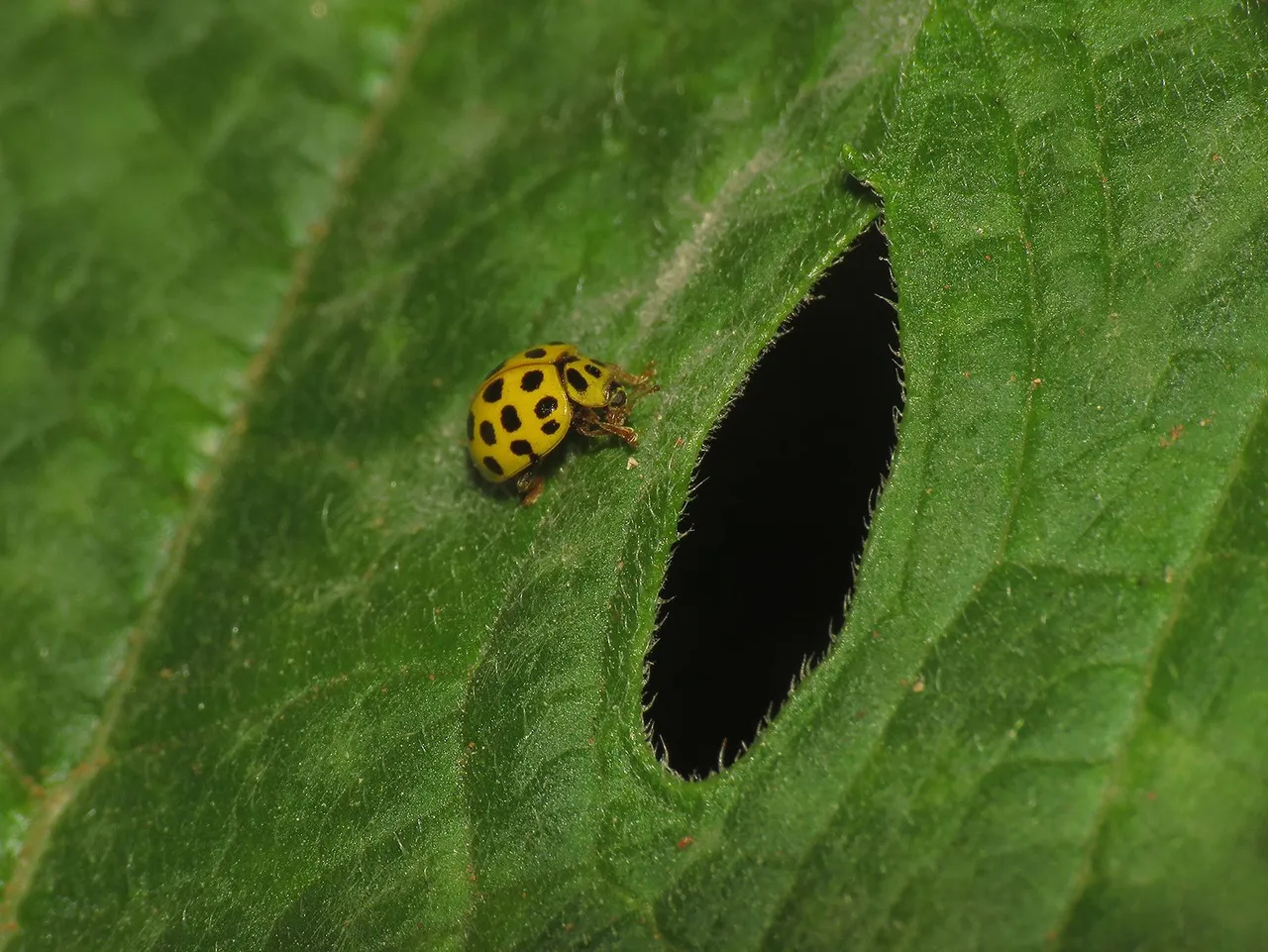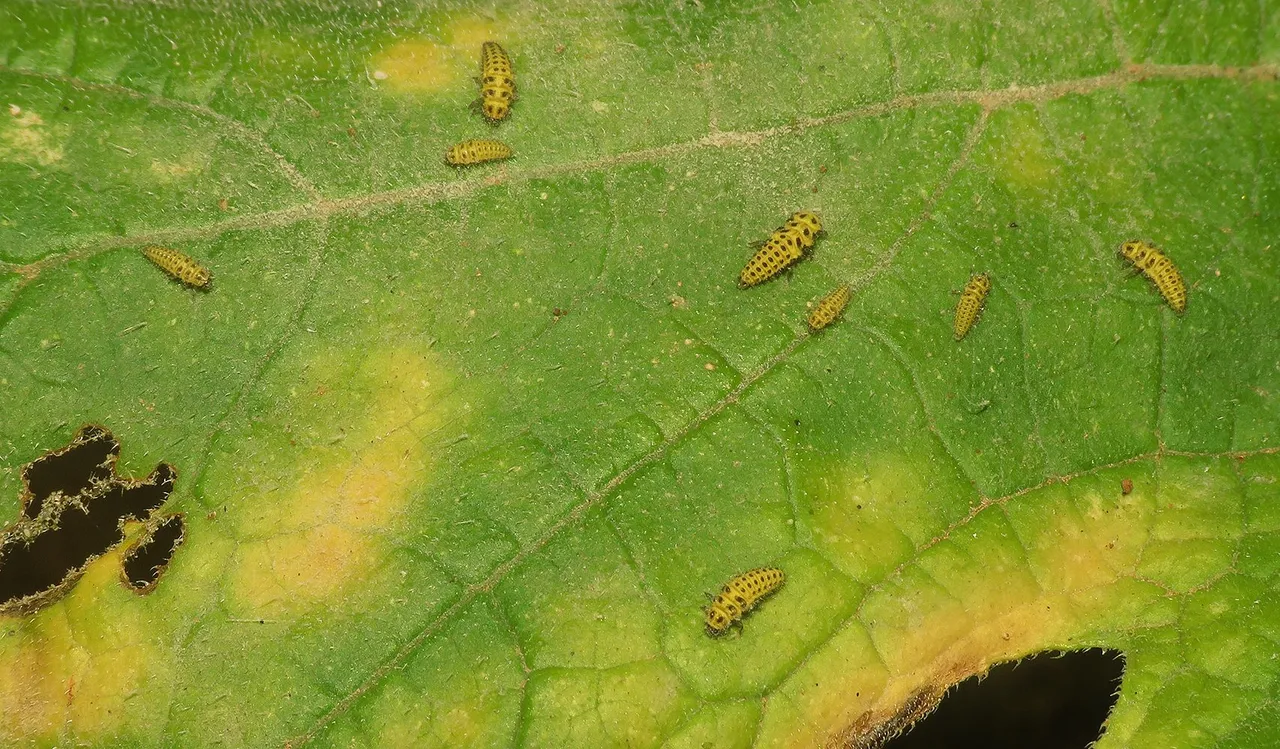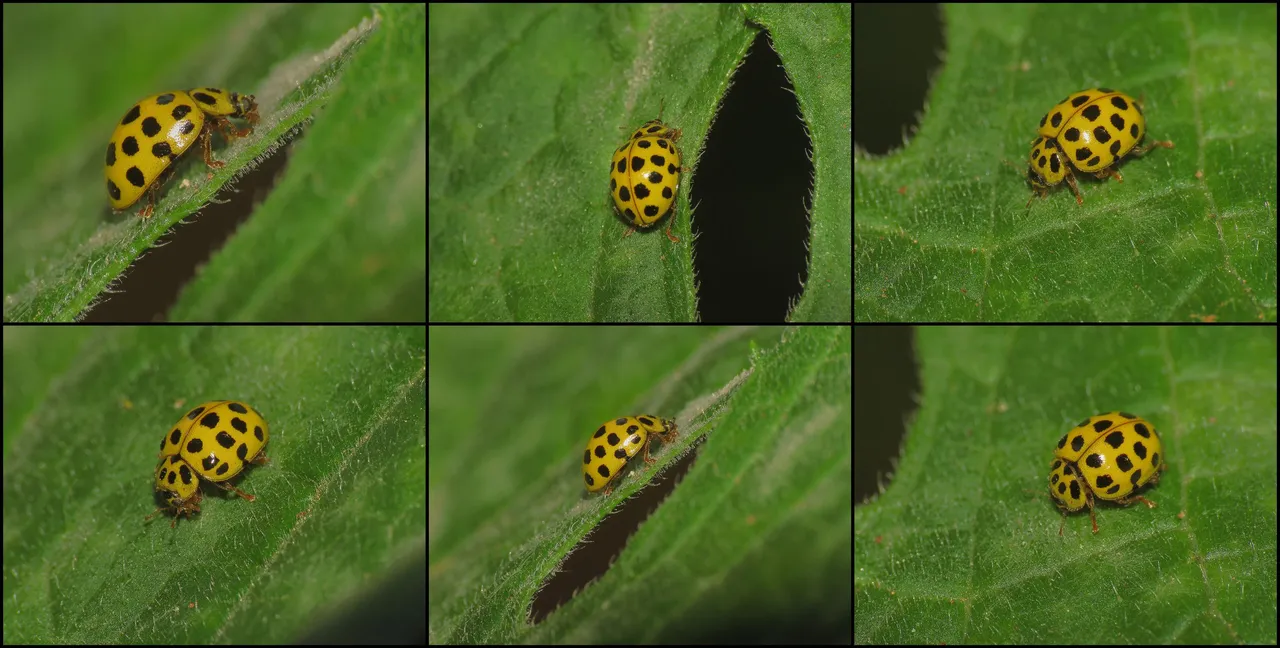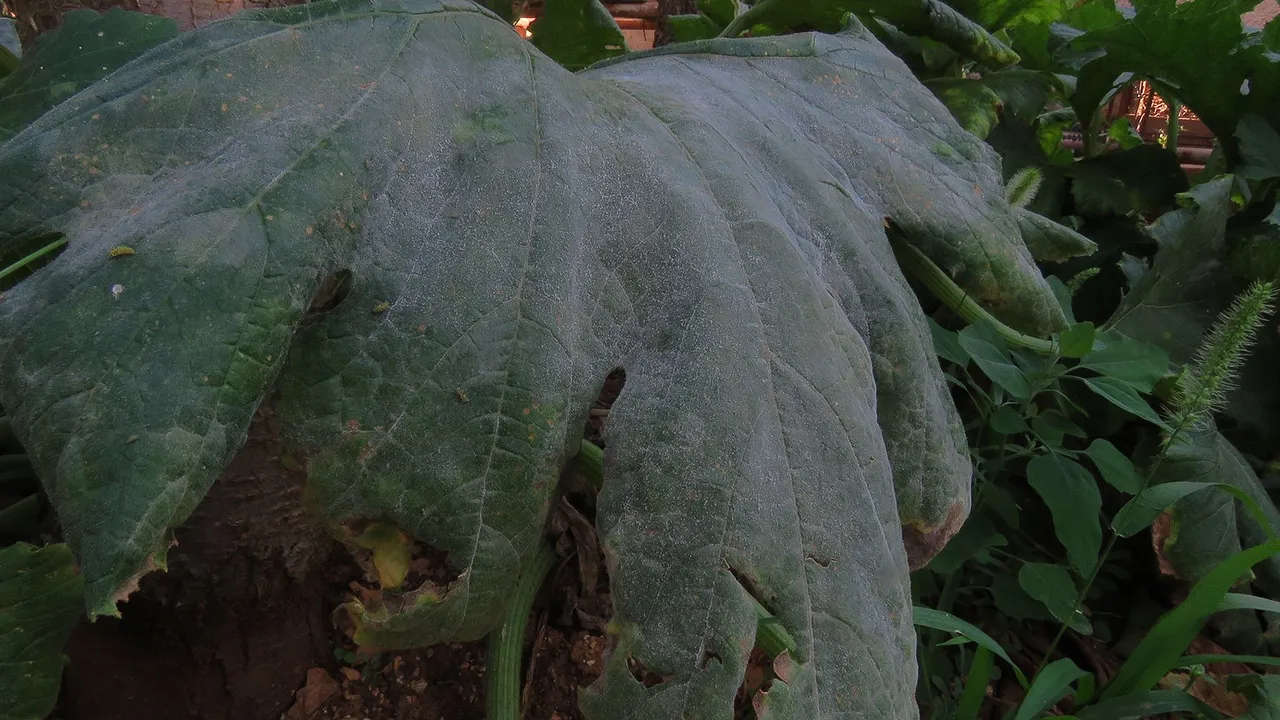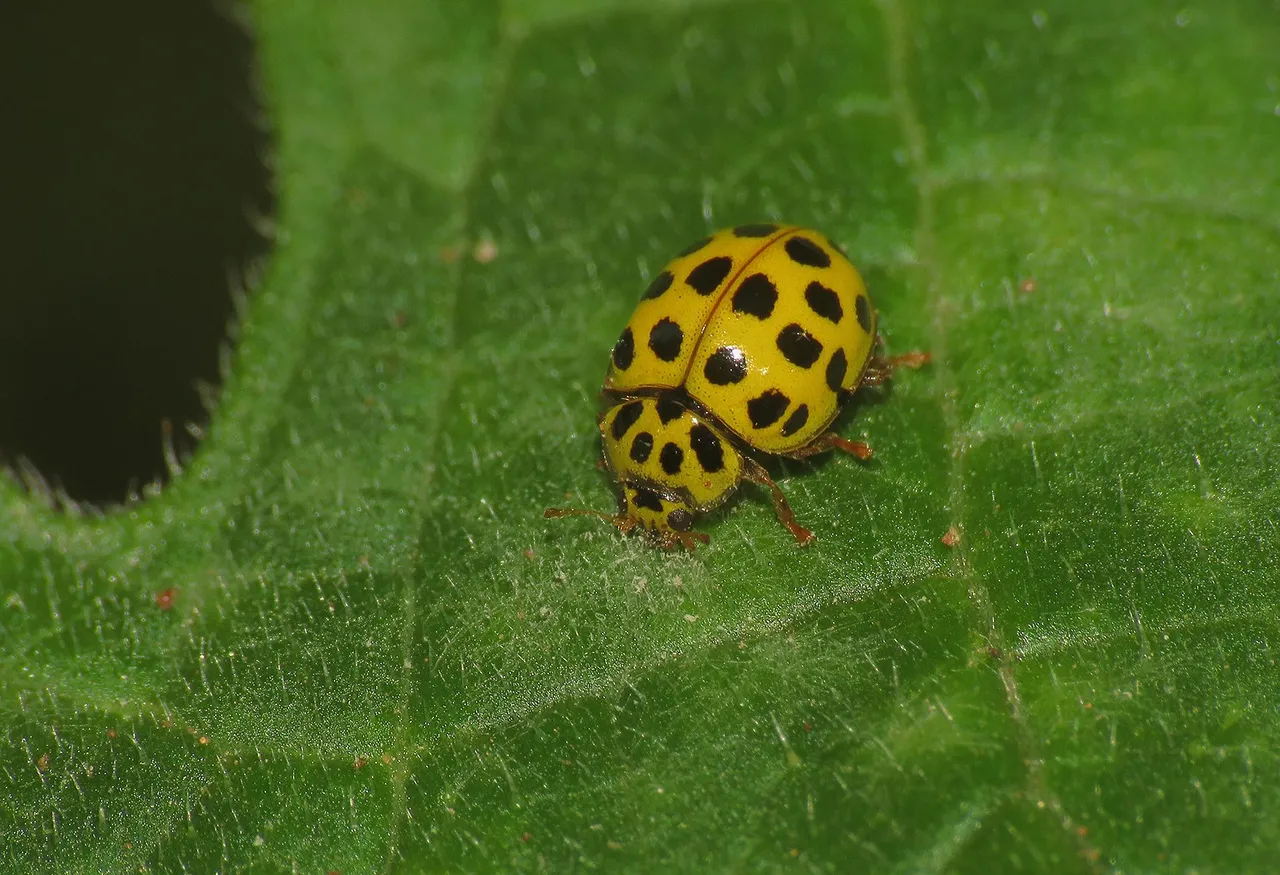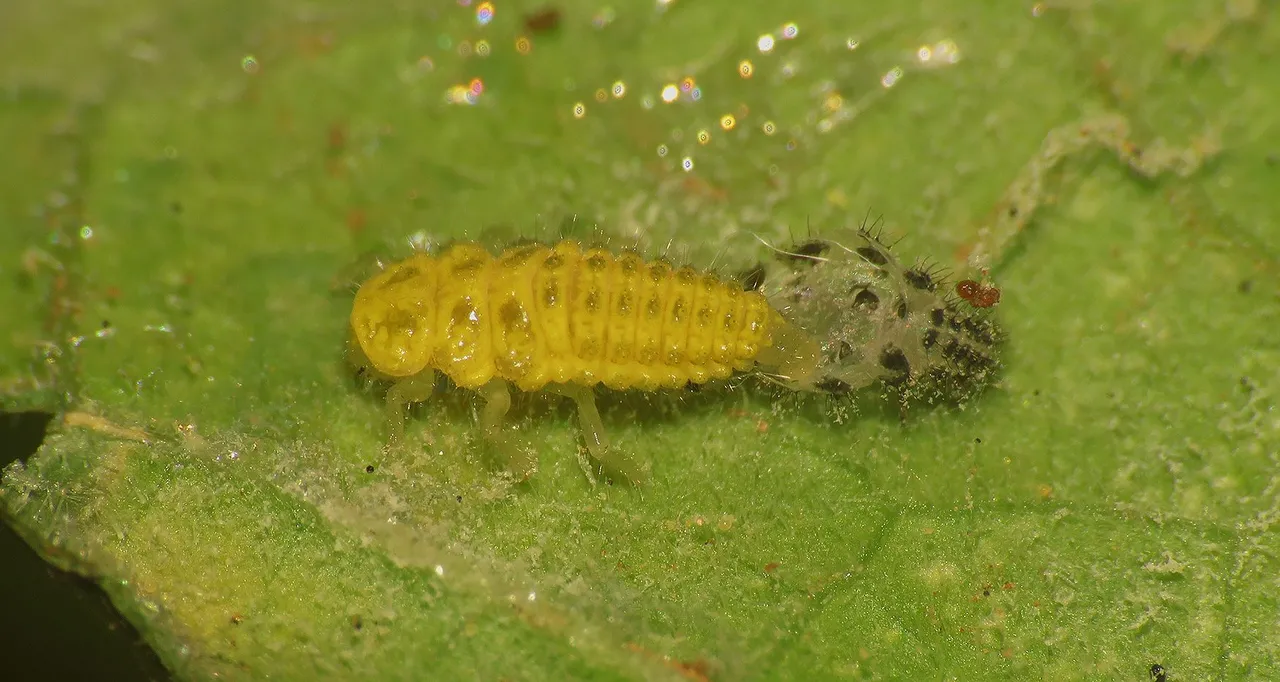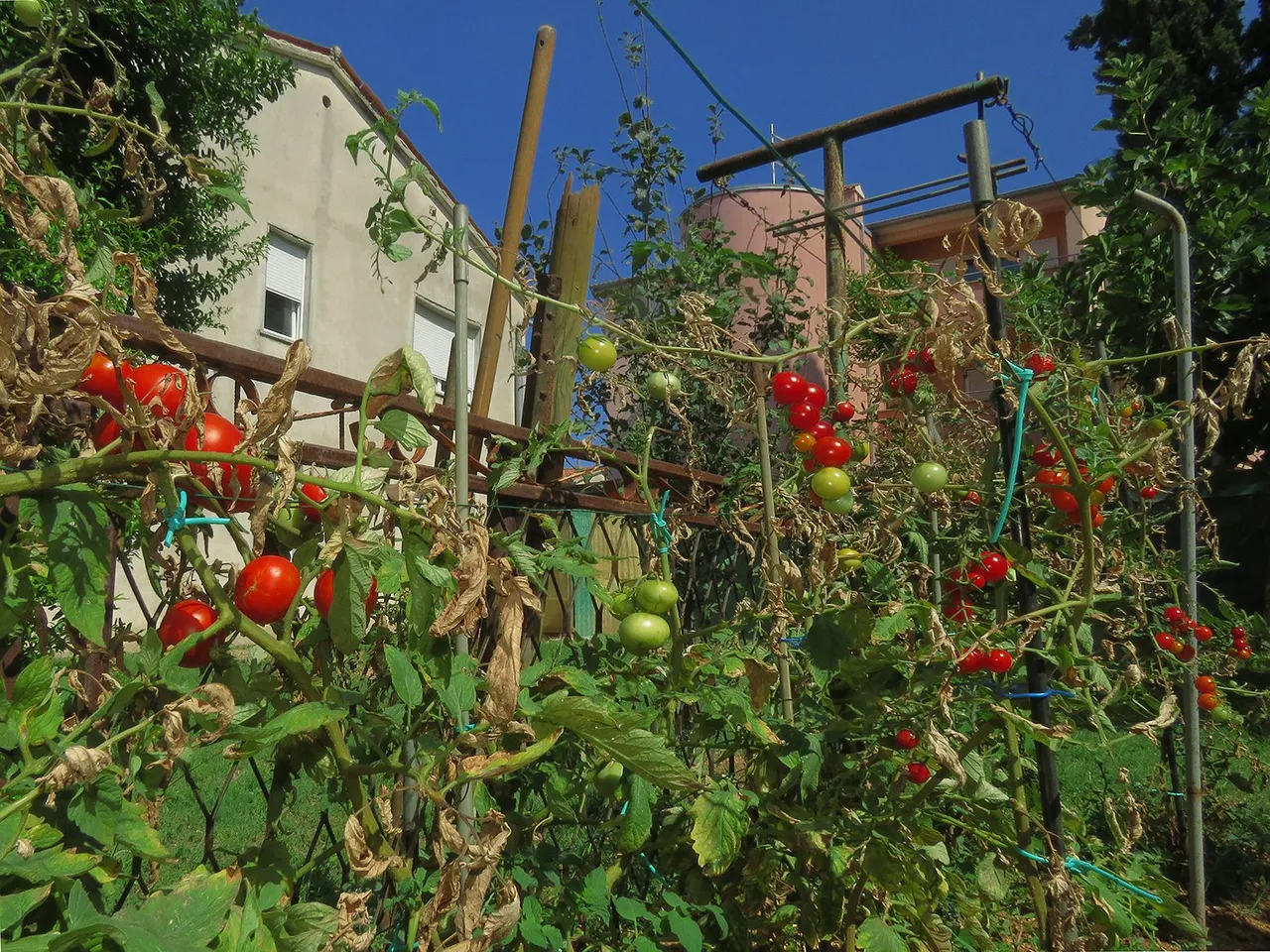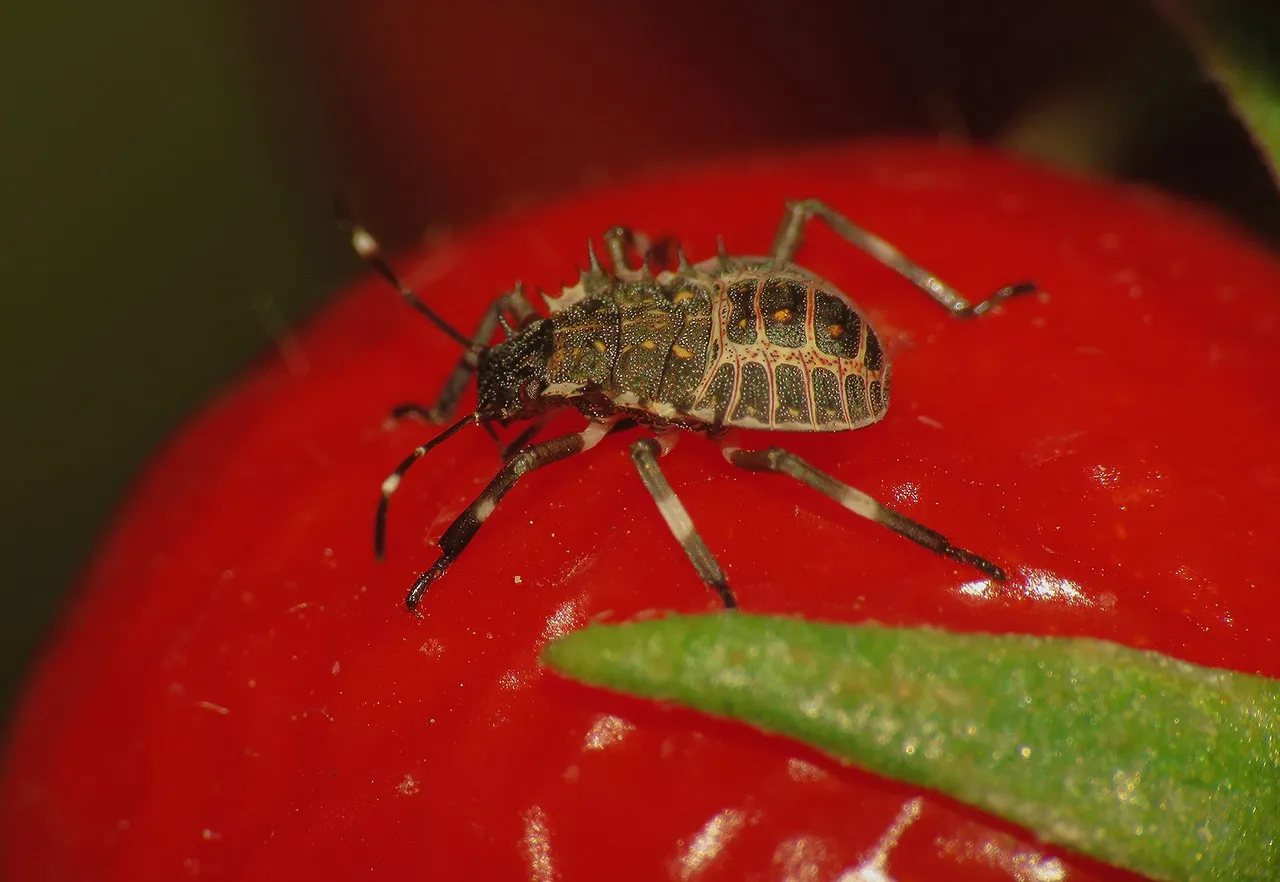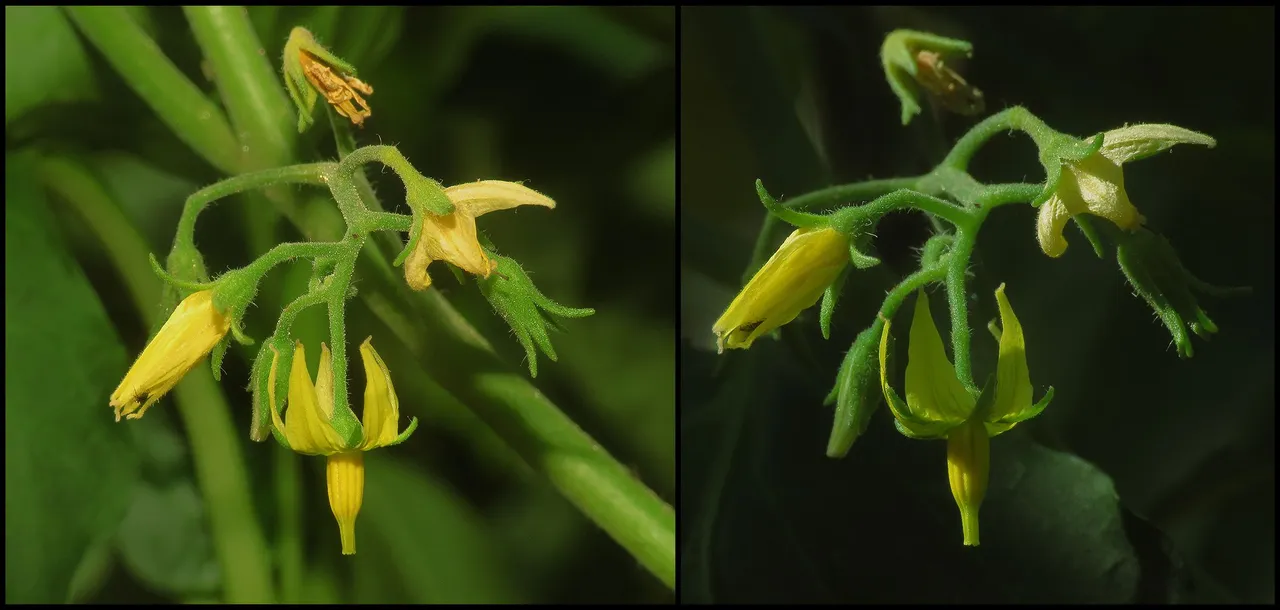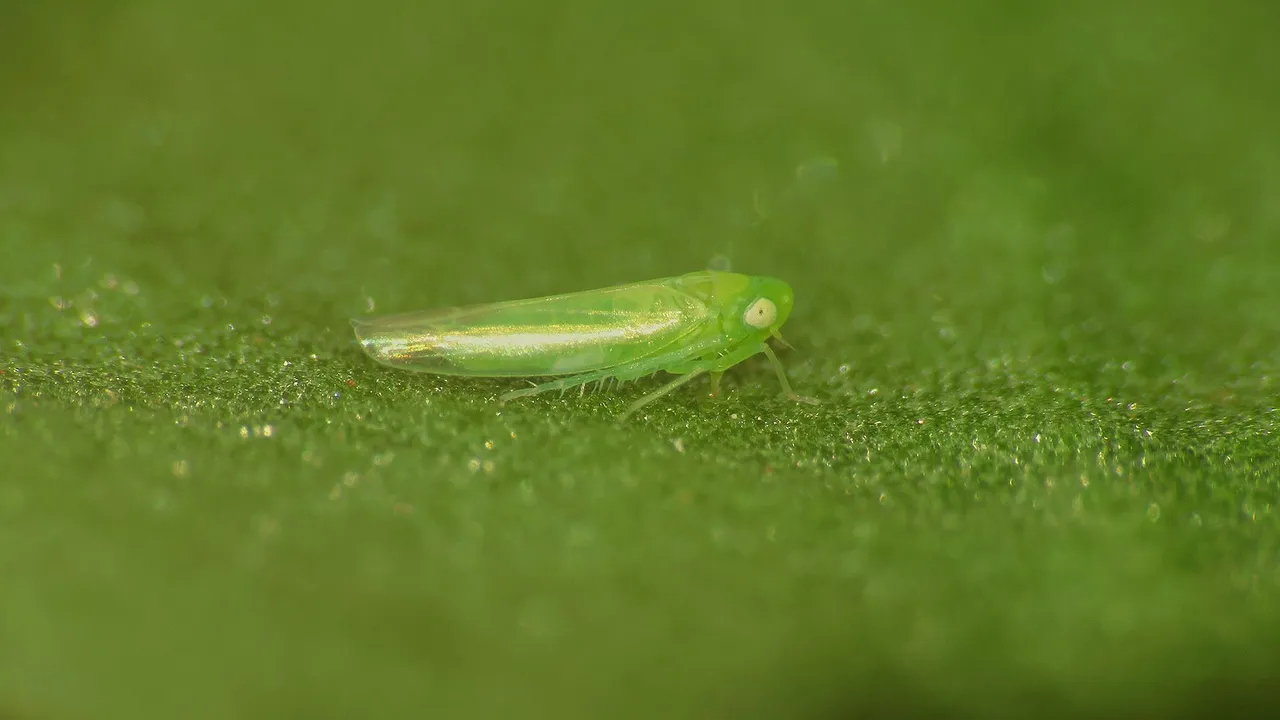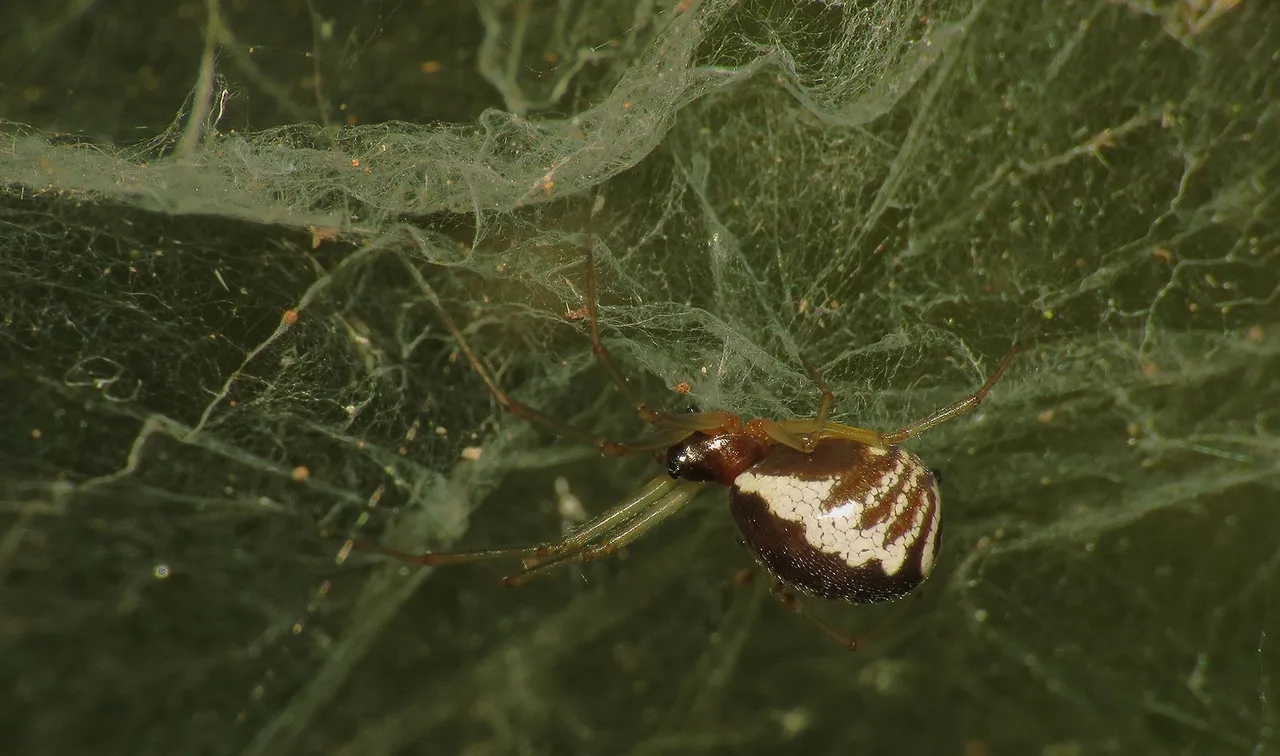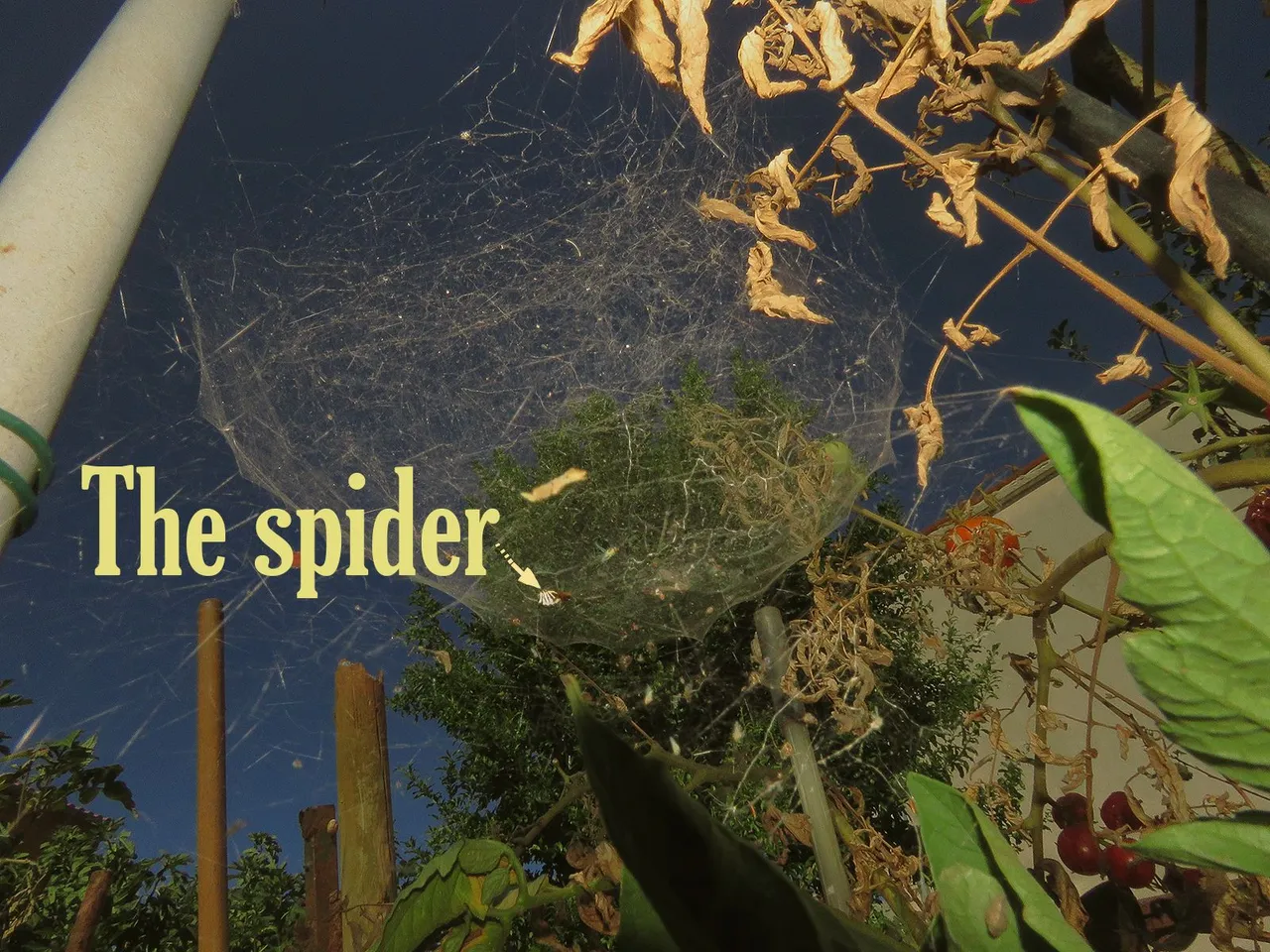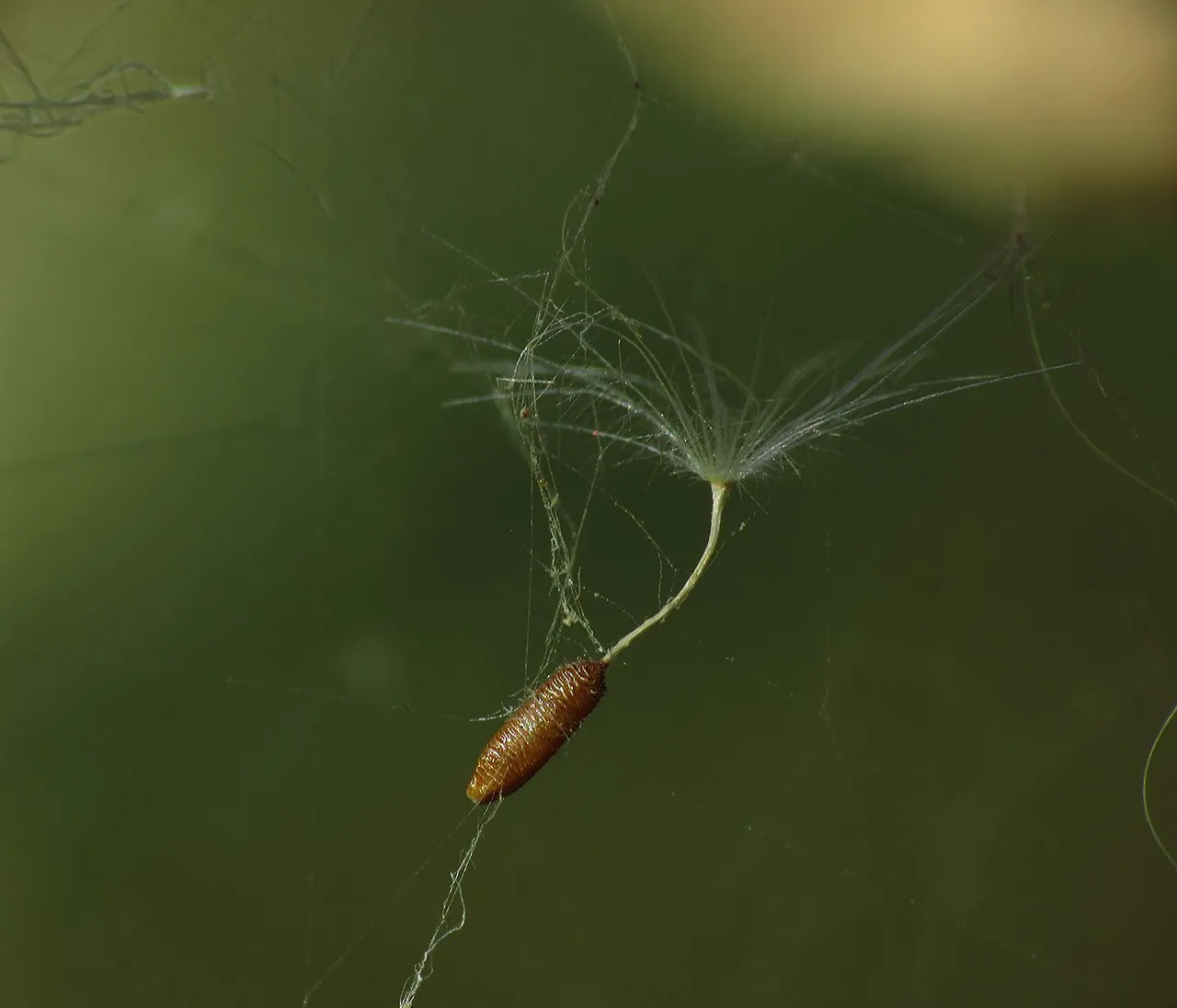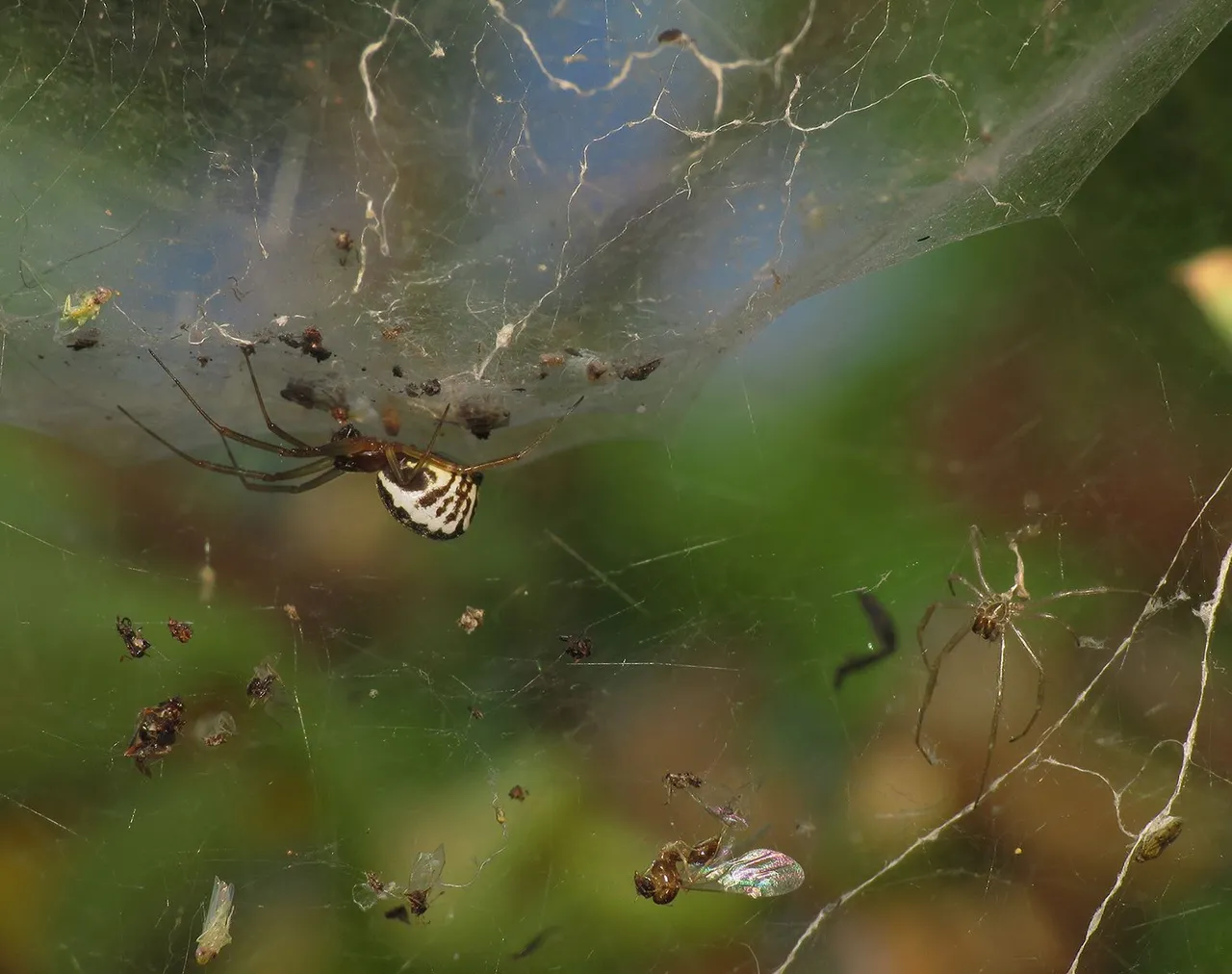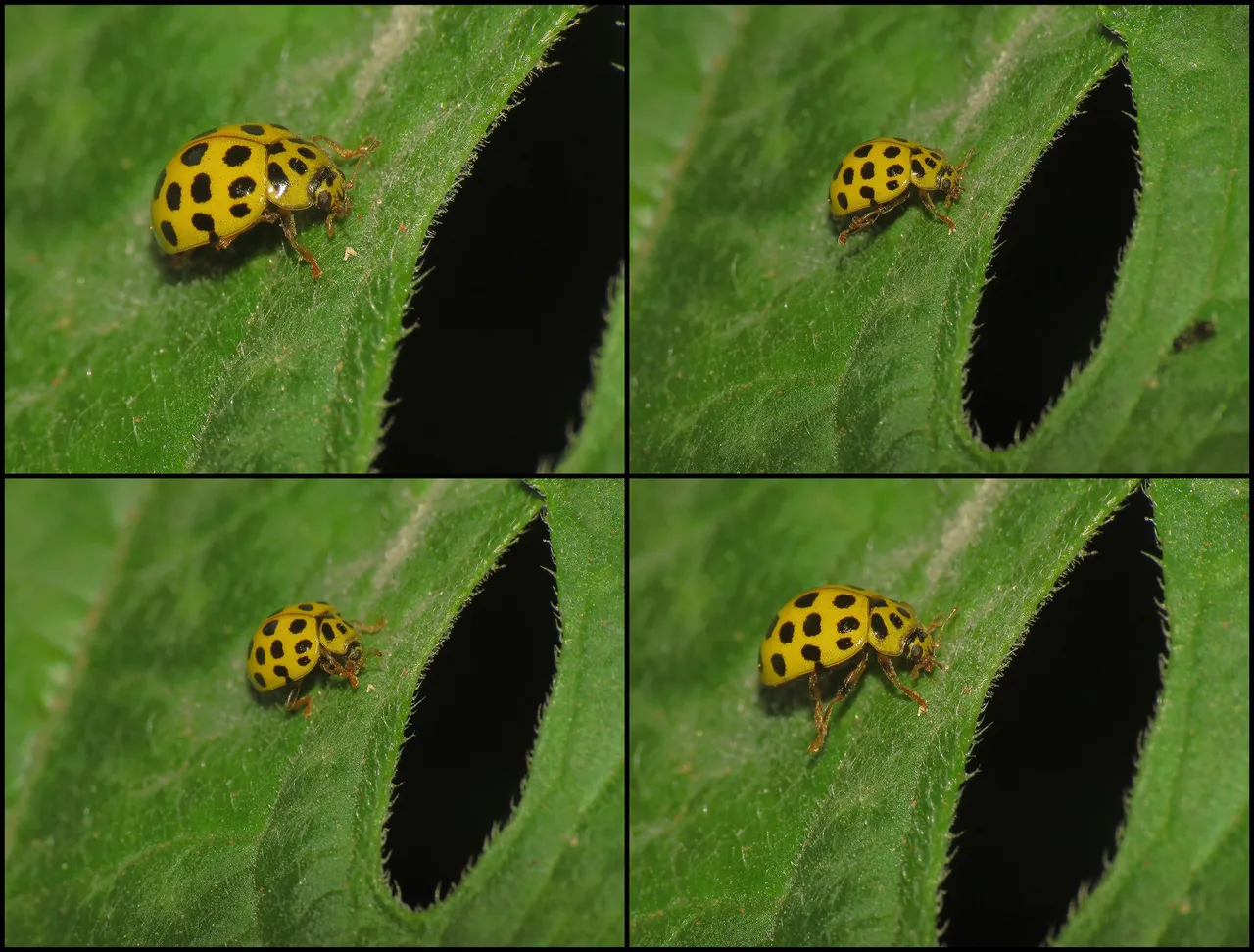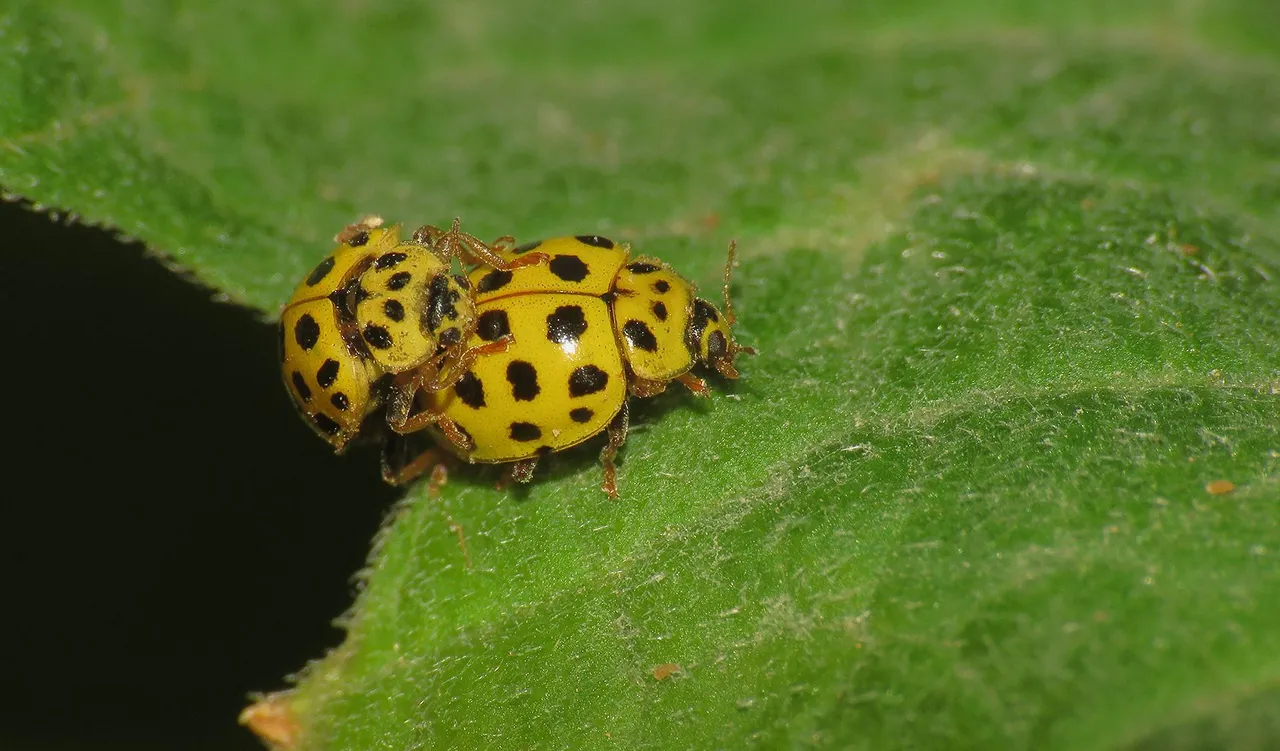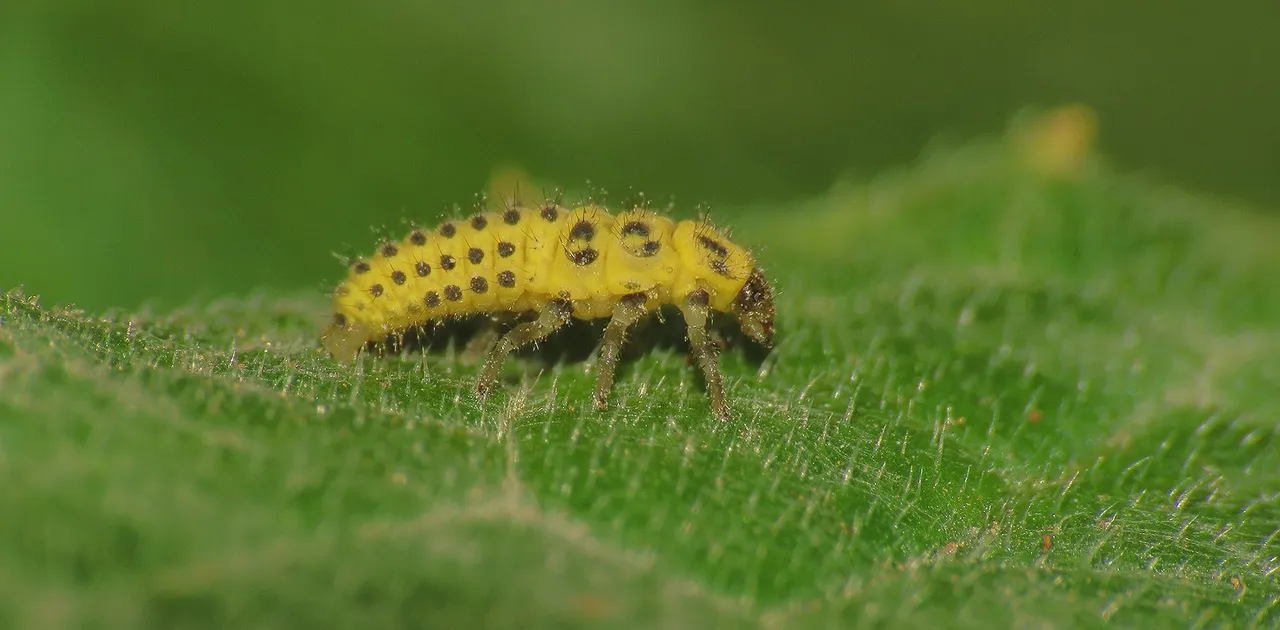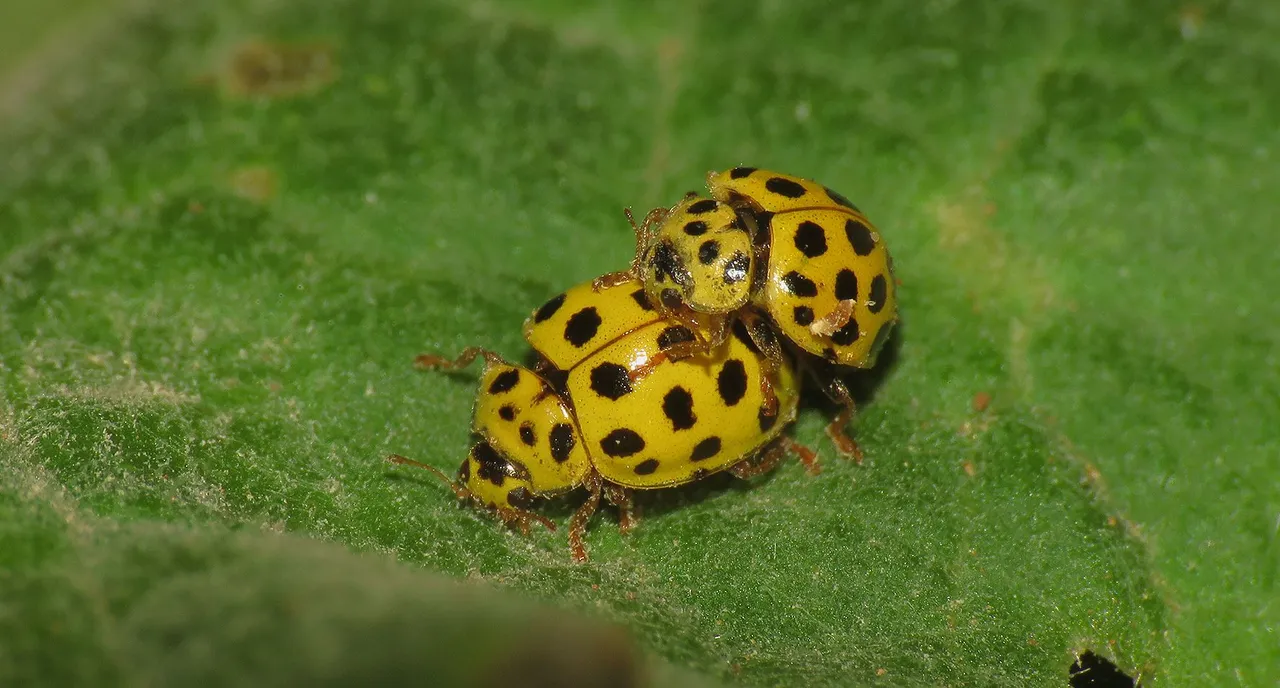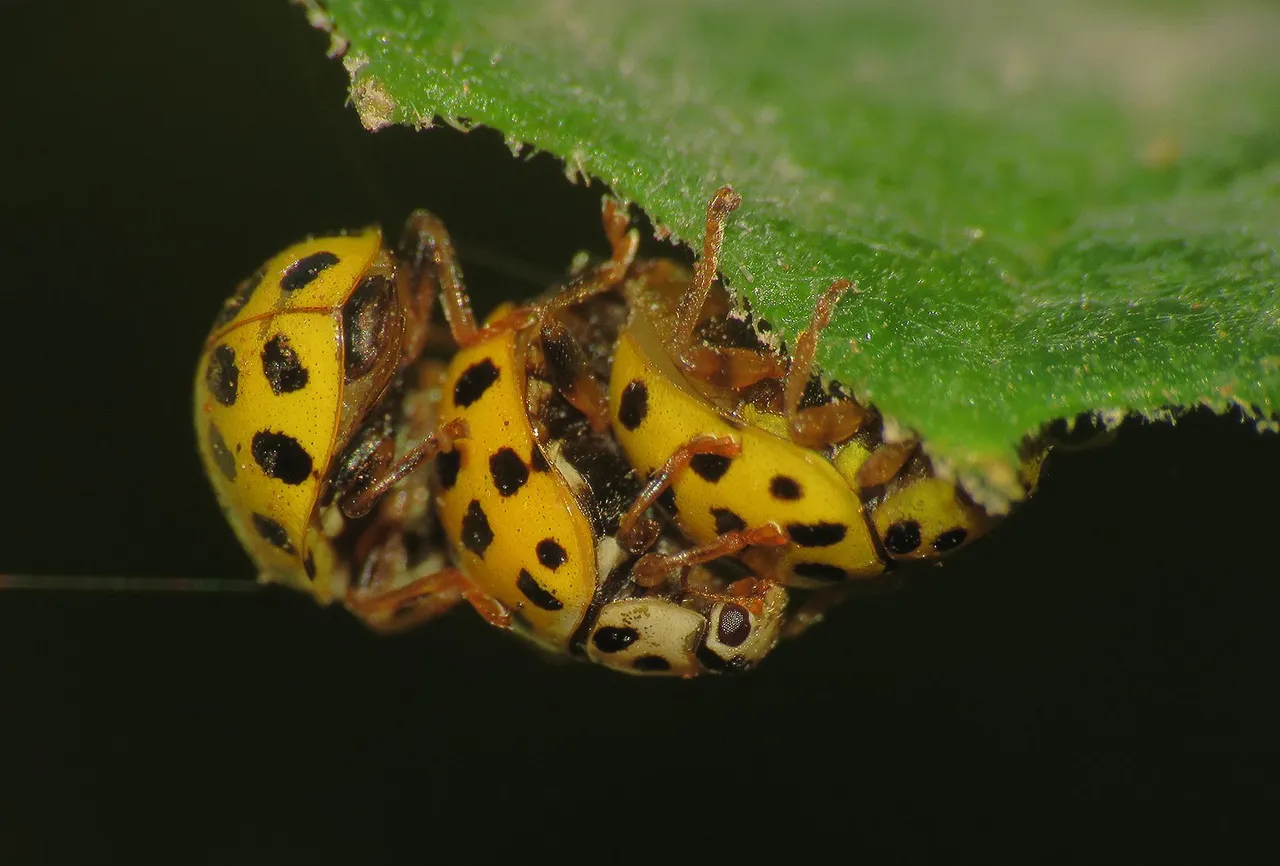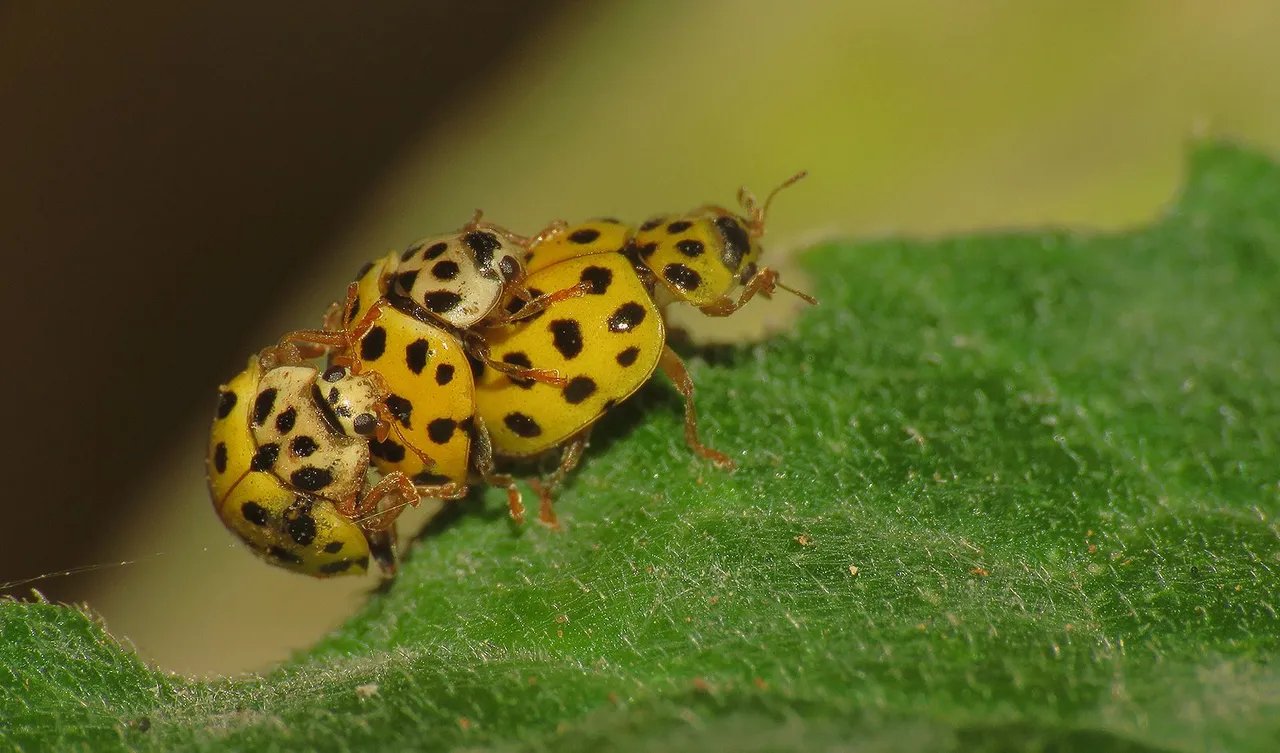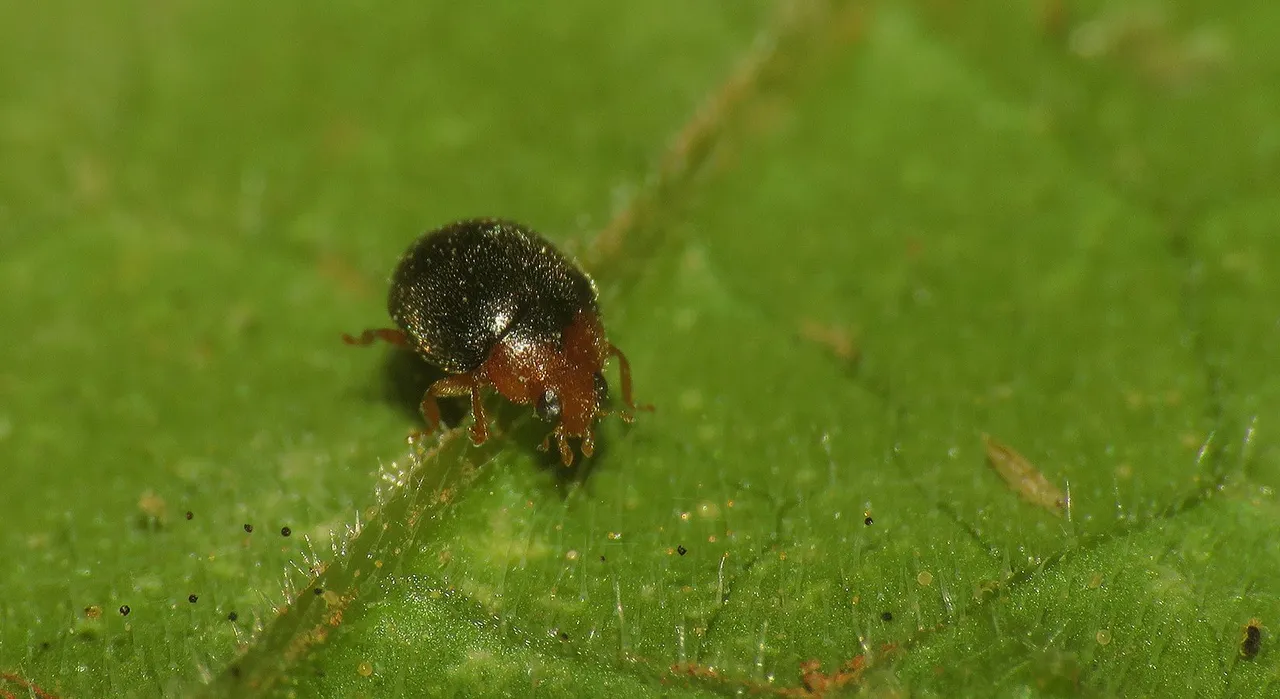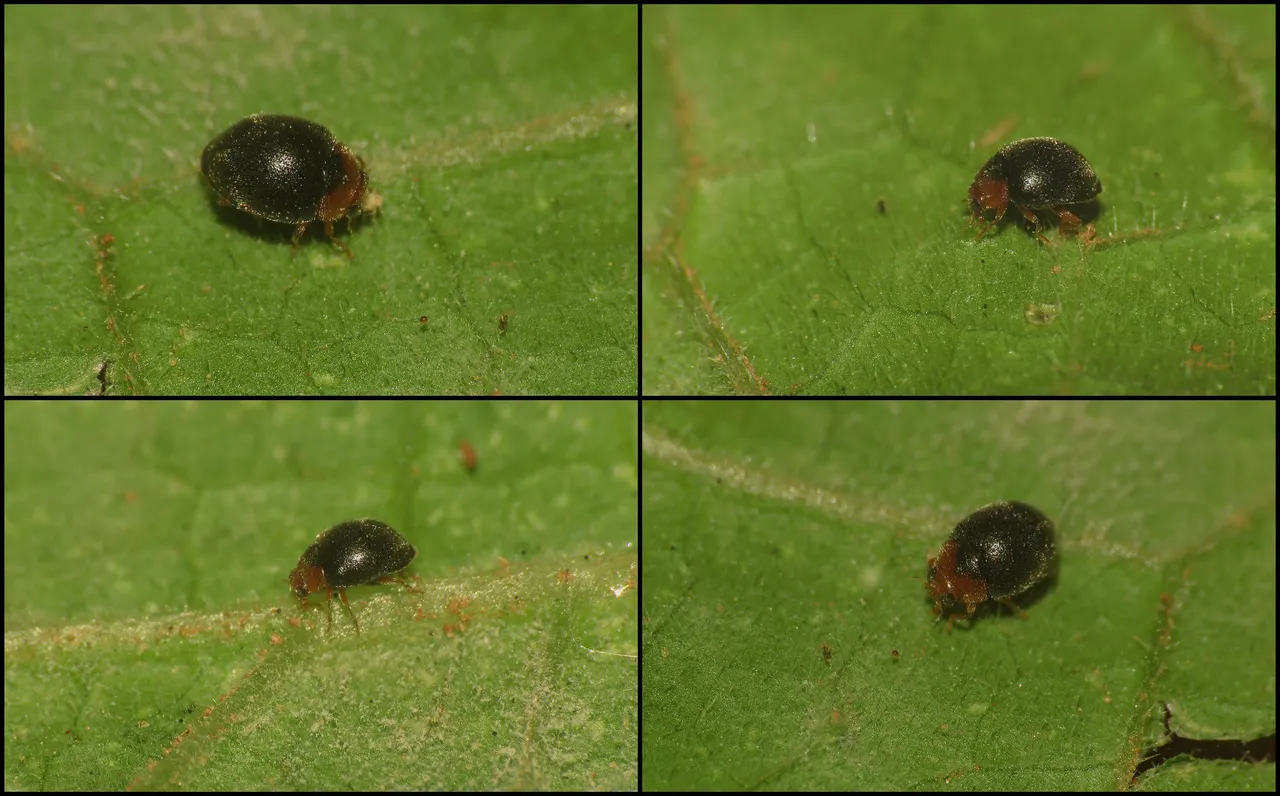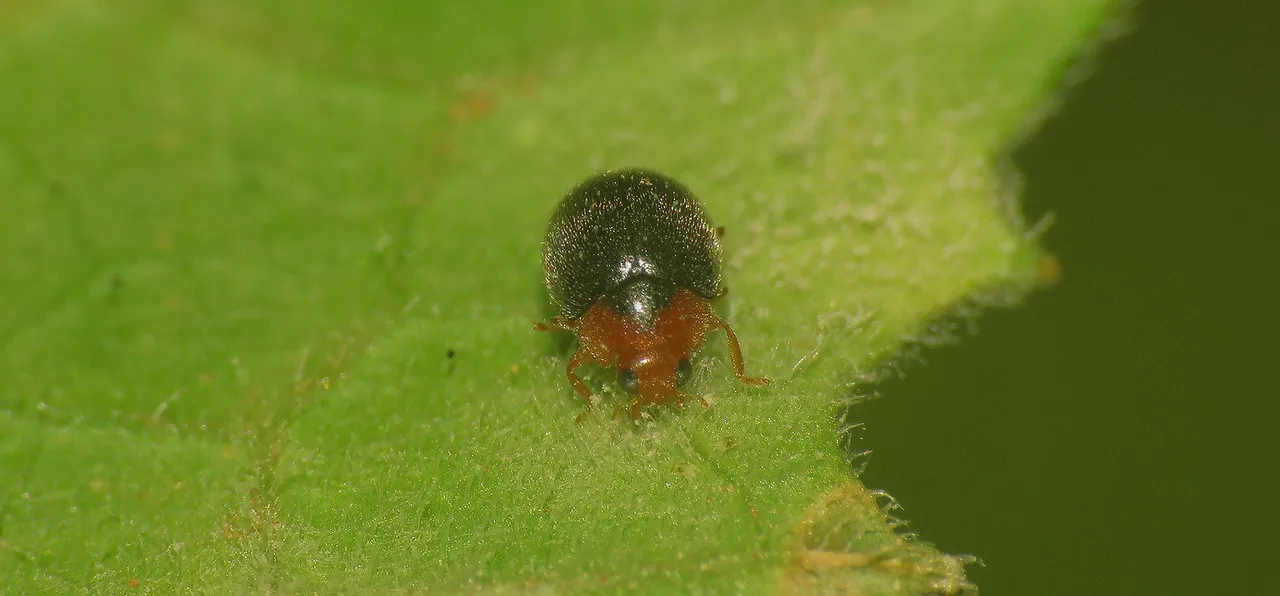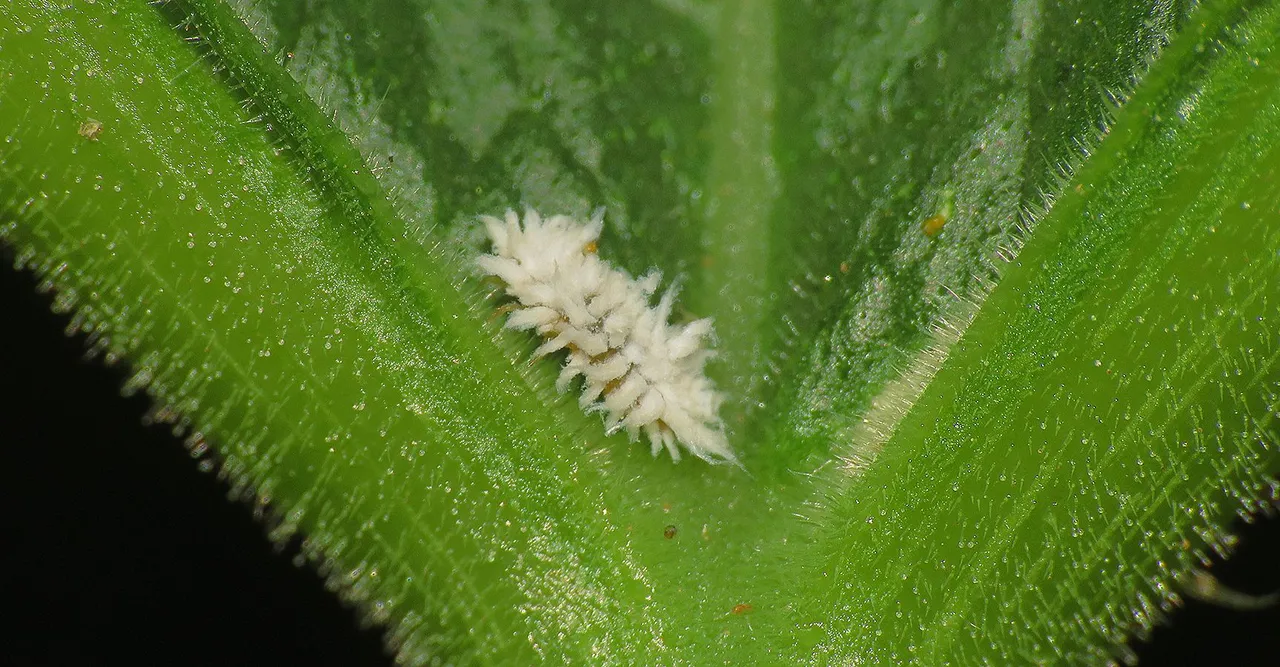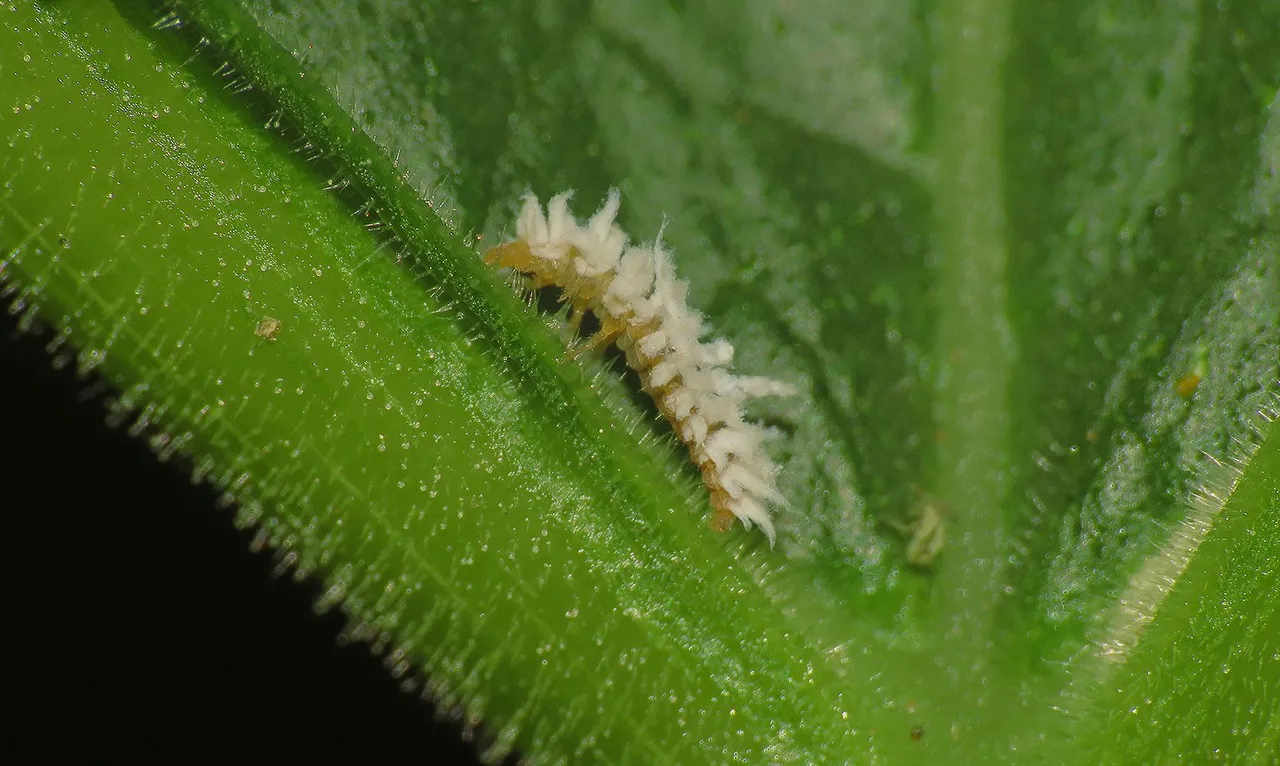There is plenty of action in my small garden during the summer. I don't use any pest control, pest repellent, or anything like that because I'm more into photographing the lifestyle of those little pests than into producing and eating fruits & vegetables. However, in the end, I always get both things - plenty of insects to observe, and something homegrown to eat.
In the six episodes of this series, I'm gonna show you what I photographed, mostly through the macro lens, from mid-August to the first week of September. All the fascinating insect and arachnid life that revolves around the plants in my garden.
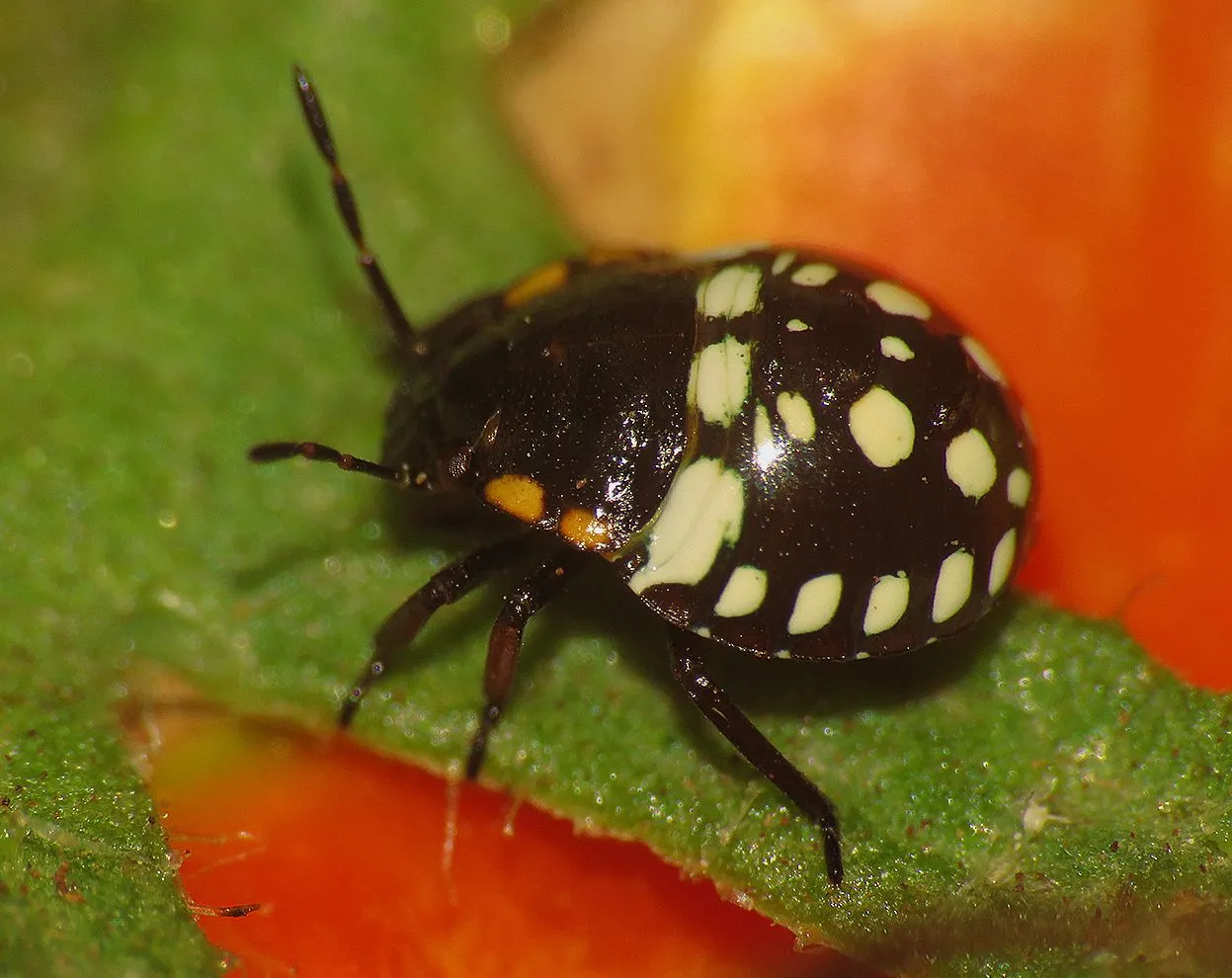
This is the young, wingless nymph of a stink bug.

The stink bug in question is Nezara viridula, commonly known as the southern green stink bug. The nymph shown in this and the previous photograph is the 3rd instar nymph which means that the young insect has already gone through two molts. Each time the nymph has changed not only its size but also its appearance. In the following photograph ...
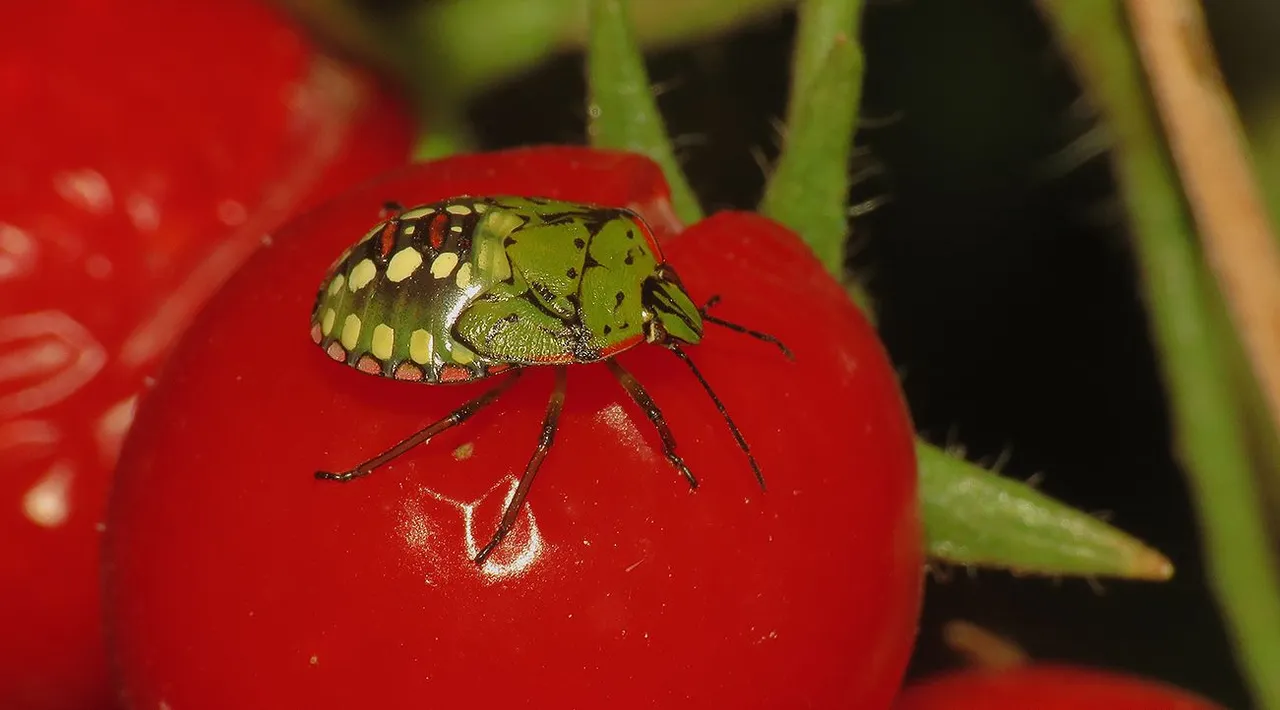
... you can see the 5th instar nymph of the same species.
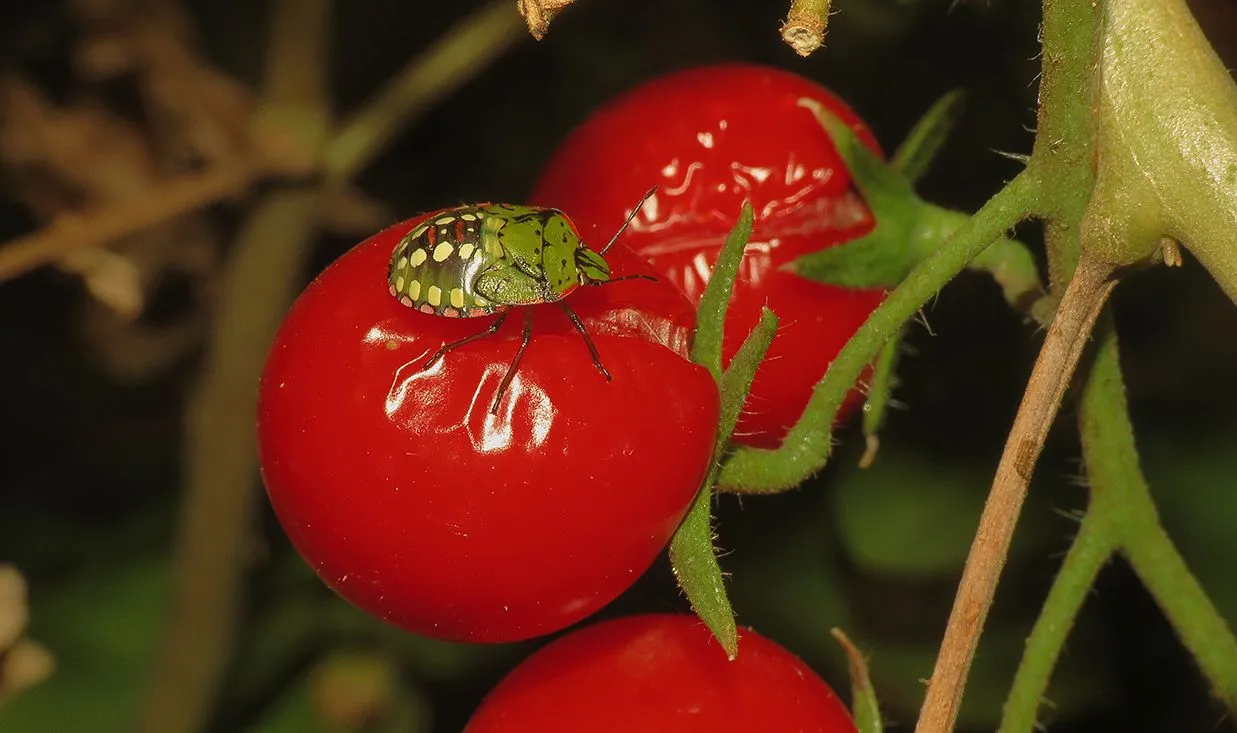
This insect will become an adult after the next molt. Southern green stink bug feeds by piercing the plant with its proboscis and sucking the liquid nutrients.
This small ladybeetle was found and photographed on the large leaf of the zucchini plant. In the following photograph ...
... you can see a bunch of larvae feeding on another leaf of the same plant.
The name of the species is Psyllobora vigintiduopunctata. The family is Coccinellidae, of course.
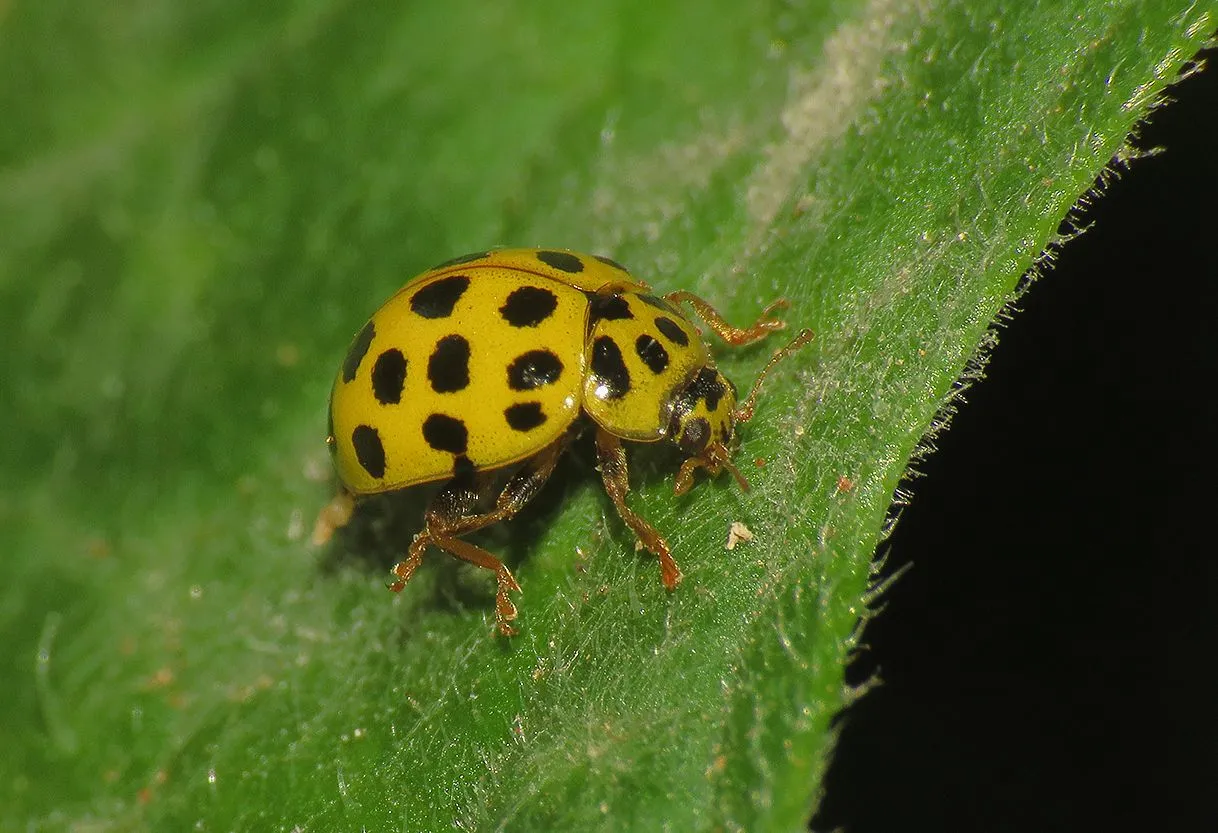
Most ladybeetles, both in their adult and larval stages, are predators that feed on aphids and other small insects and their eggs. Most but not this one.
The upper surfaces of the zucchini leaves were covered with something that looked like white powder.
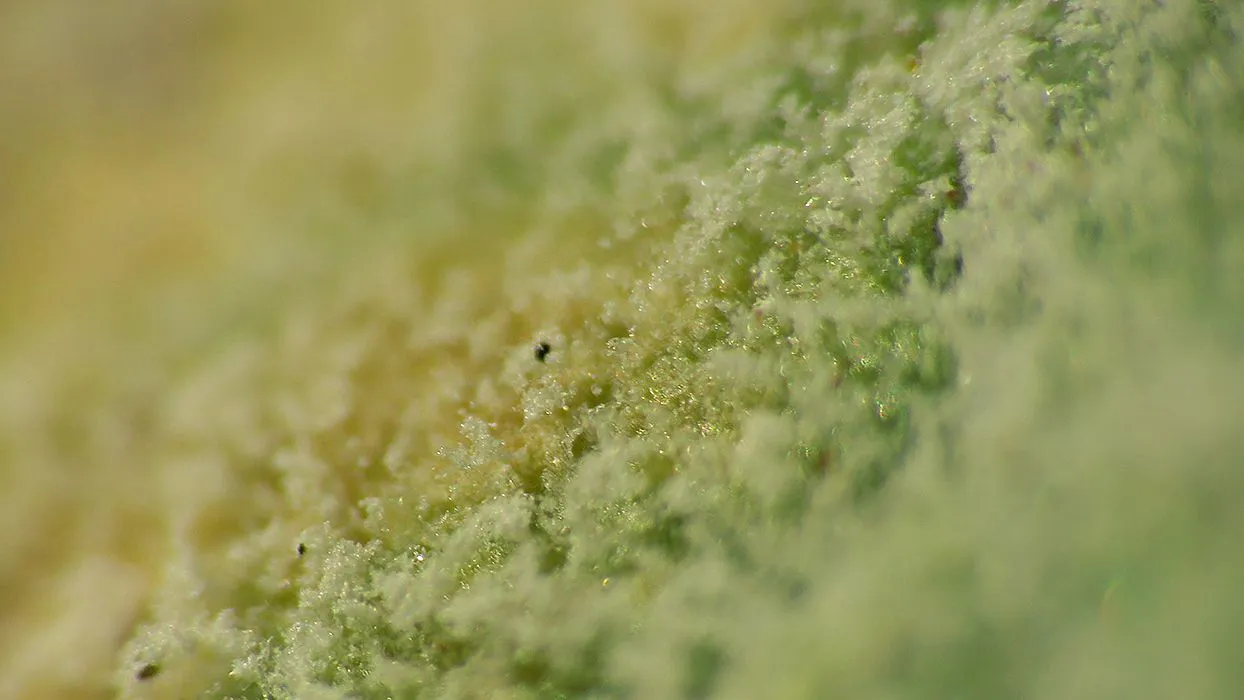
You can see that thing through the macro lens in this photograph. It's called mildew. Powdery mildew like this is caused by many different species of ascomycete fungi in the order Erysiphales. In the following photograph ...
... an adult Psyllobora vigintiduopunctata is eating the mildew.
In these two photographs, the larvae are doing the same.
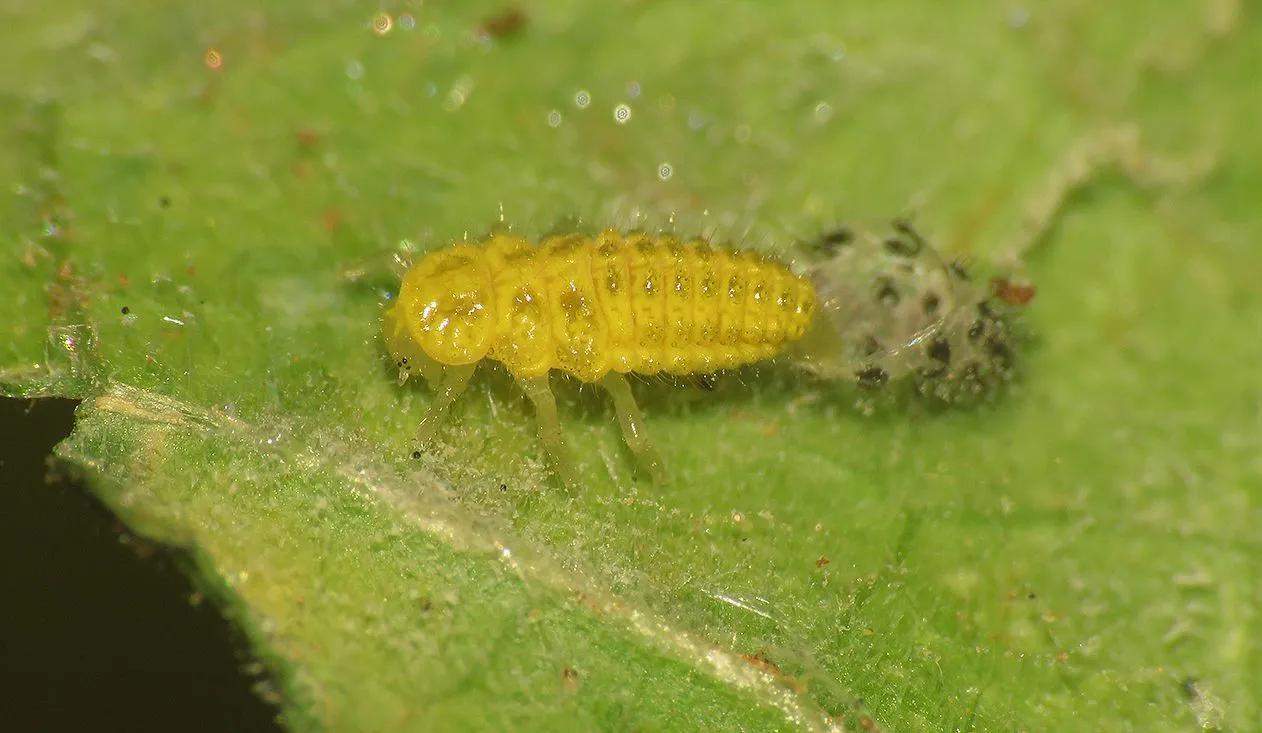
As the larvae grow on a mildew diet, their soft exoskeletons can't follow the growth.
This larva just came out of its old exoskeleton. It will take some time for the iconic black dots to appear on the brand-new skin, still very soft and pale.
With this photograph, you can take a break from the macro view and see a bunch of tomatoes and fragments of my and the neighboring house in the background.
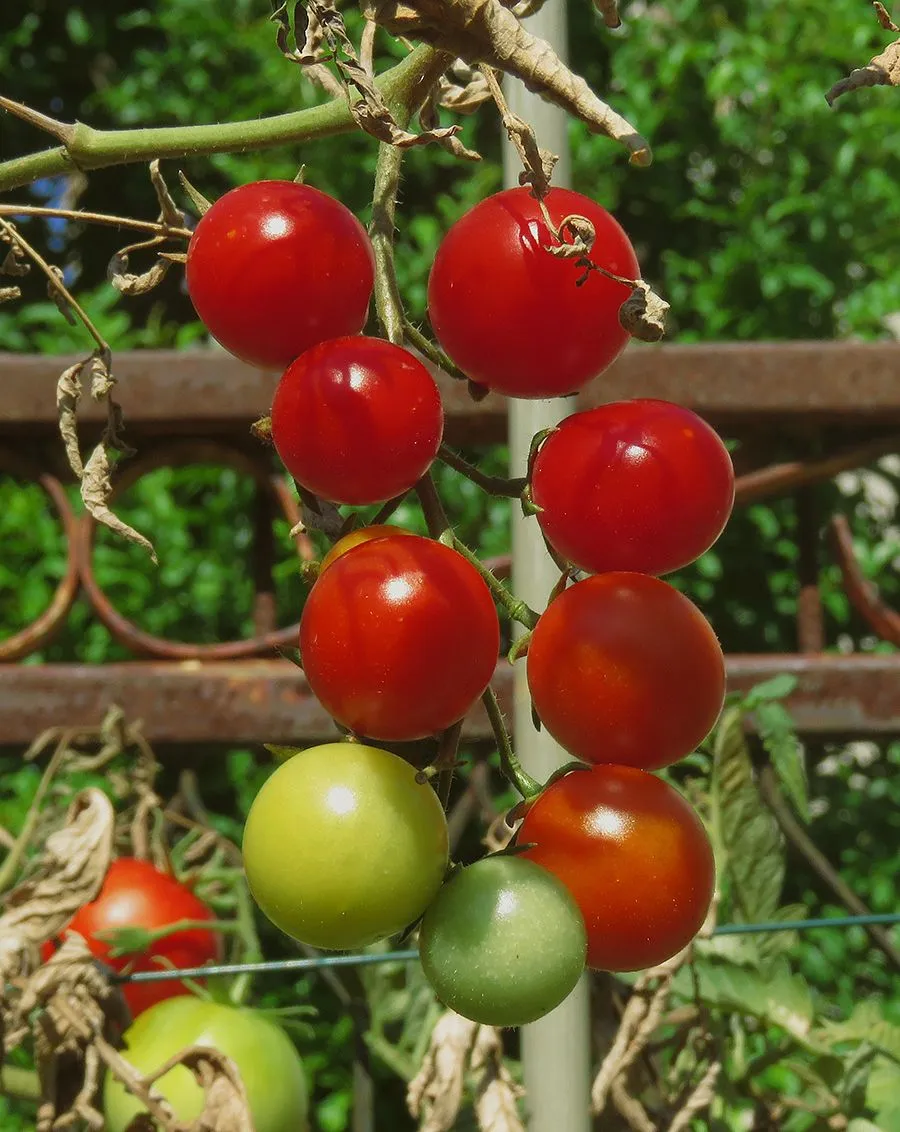
I planted more cherry tomatoes than usual this year.
The insect posing on the ripe tomato fruit in this photograph is a 4th instar nymph of the Halyomorpha halys, commonly known as the brown marmorated stink bug, another species from the Pentatomidae family that thrives in my garden. Nezara viridula, introduced earlier in the post is also a Pentatomidae species. In the following photograph ...
... you can take a good look at the tomato flowers. Only one of the tomato plants in my garden had a couple of flowers among the many fruits on the 19th of August when these two photographs were taken. For the shot in the right half of the picture, I used only the ambient light. The photograph on the left was illuminated with the flash of my camera.
This leaf hopper from the Cicadellidae family was resting on the leaf of the Chenopodium album plant near the tomatoes. The name of the species is Empoasca decipiens. Chenopodium album is a self-seeding weed, but it's an edible weed that can be used as some kind of tasty wild spinach.
Here you can see the spider that has built a relatively large web between the lower branches of the tomato plant.
After taking a couple of shots with the spider in the center of the composition ...
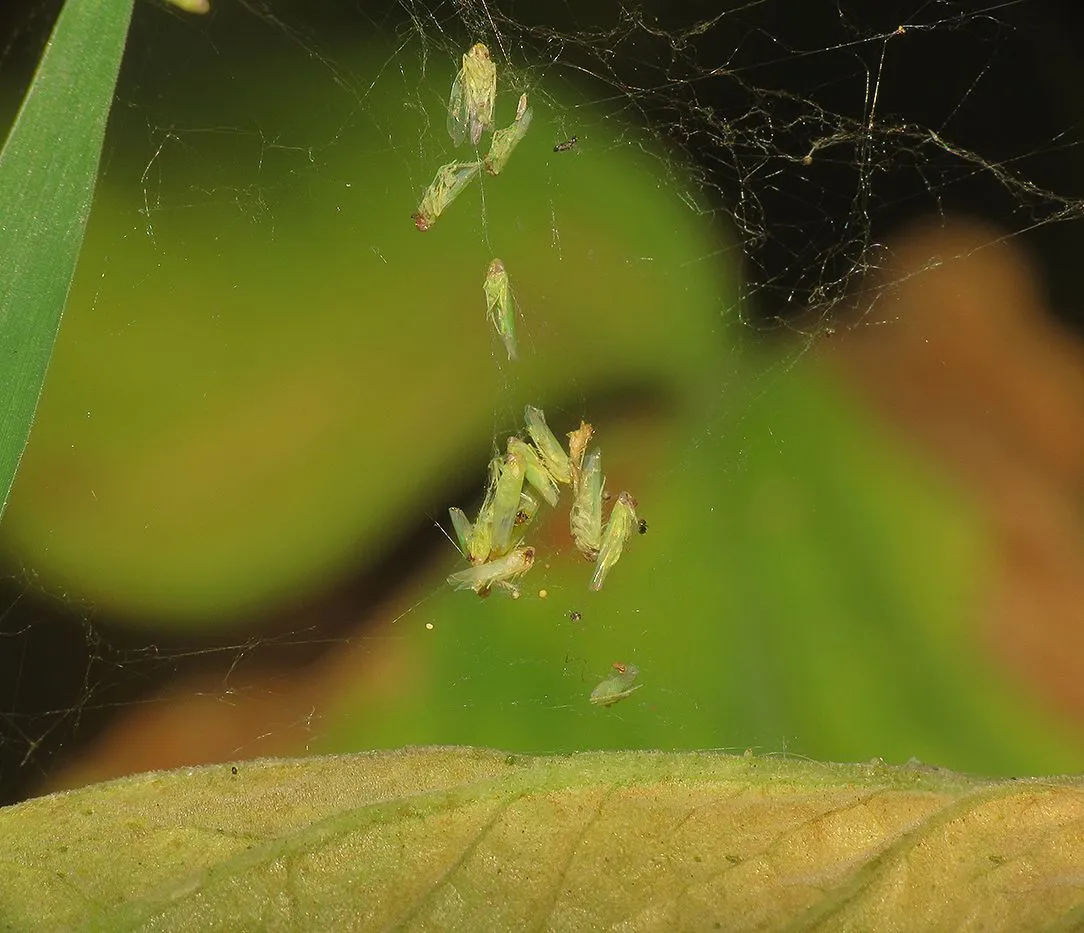
... I noticed a cluster of leafhopper corpses near the lower edge of the silky construction.
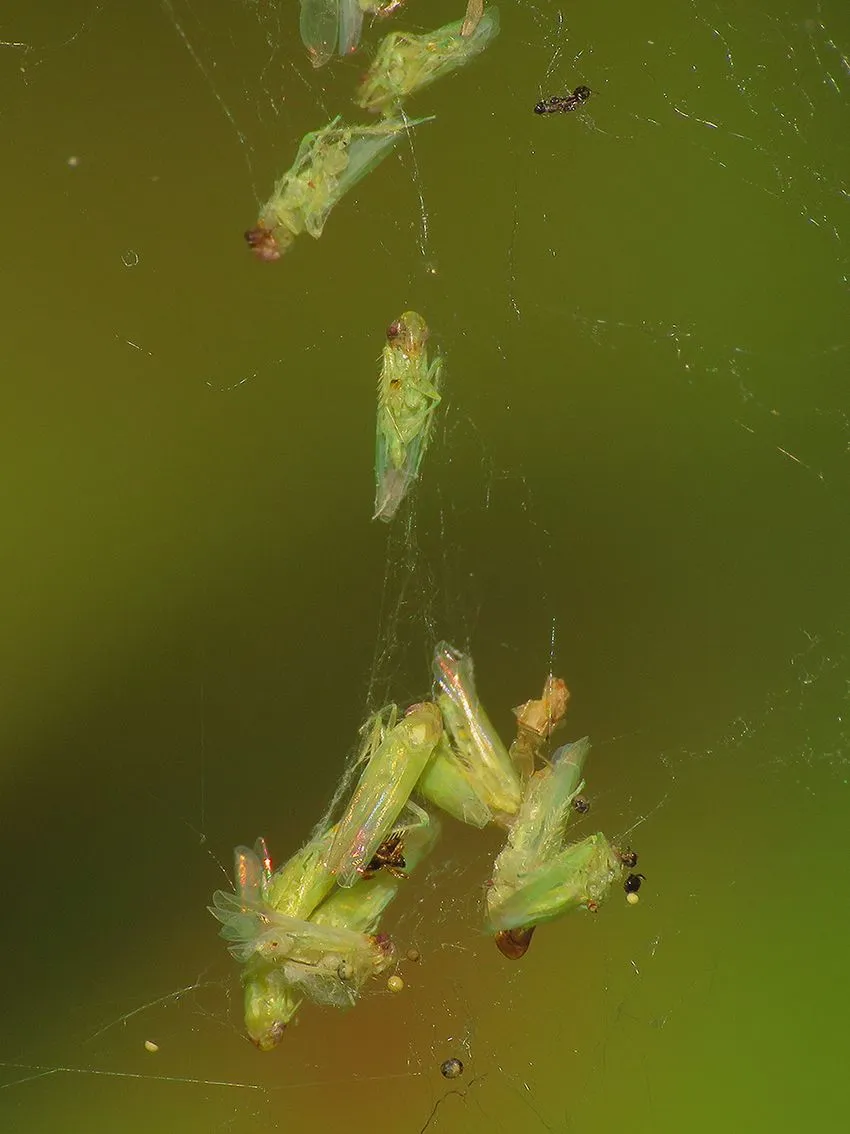
The garden obviously provides an abundance of prey for the arachnid predator.
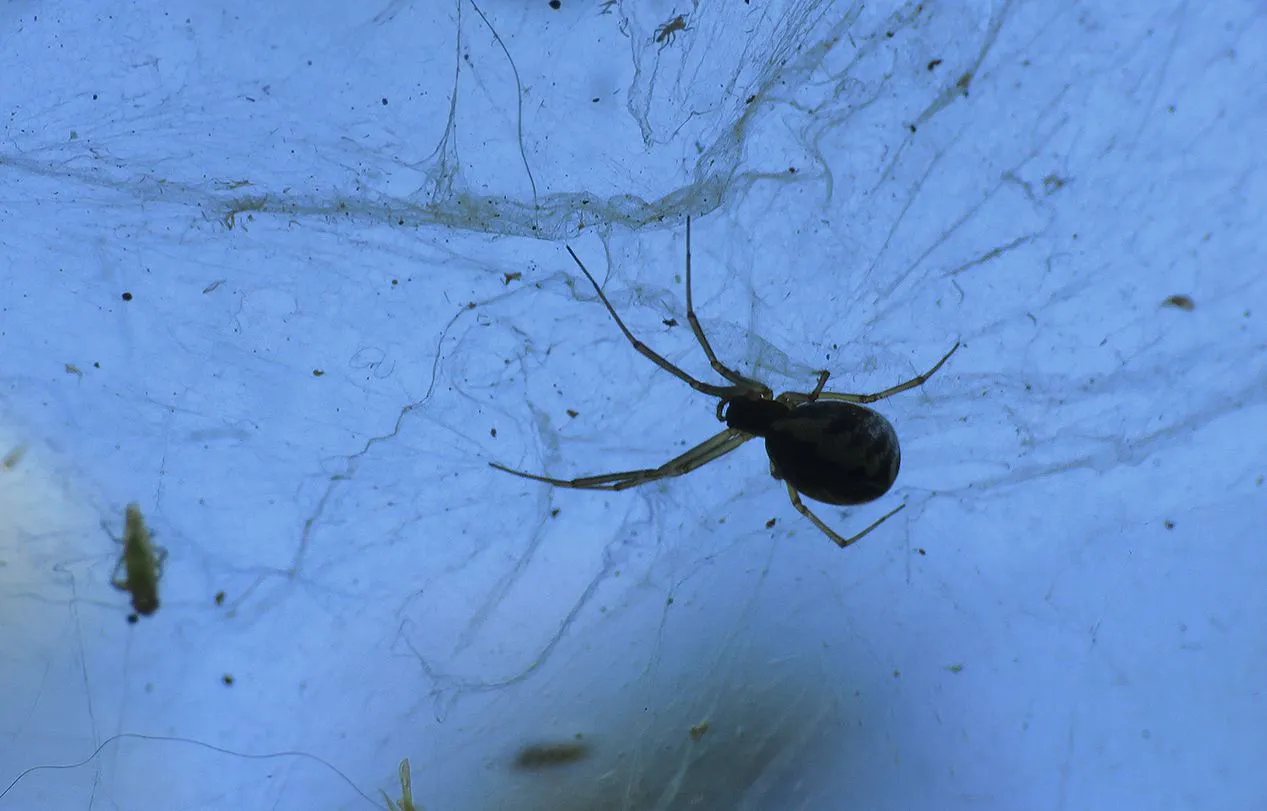
When it comes to the name of the species, this is the Frontinellina frutetorum, a spider from the Linyphiidae family. I had to lay on the ground in a very uncomfortable pose to get this shot with the clear blue sky in the background.
For this photograph, I used the flash of my camera. The spider doesn't look very good when illuminated that way but you can better admire the dense, baroque intricacies of the web. Different kinds of light can reveal different features of whatever you are trying to show through photography. There is no such thing as the universally perfect light. Choose the light that suits your goal whenever you can, that's my advice. Frontinellina frutetorum builds large, bowl-shaped webs that look quite impressive when compared to the small size of the spider. In this case, the web was densely surrounded by twigs and foliage, so I can't show you its shape.
You can see the same group of tomatoes in this tryptich, but the scene was lit slightly differently in each shot. If you look from the left to the right, you'll see how I started with the flash to end with the ambient light provided by the early morning sun.
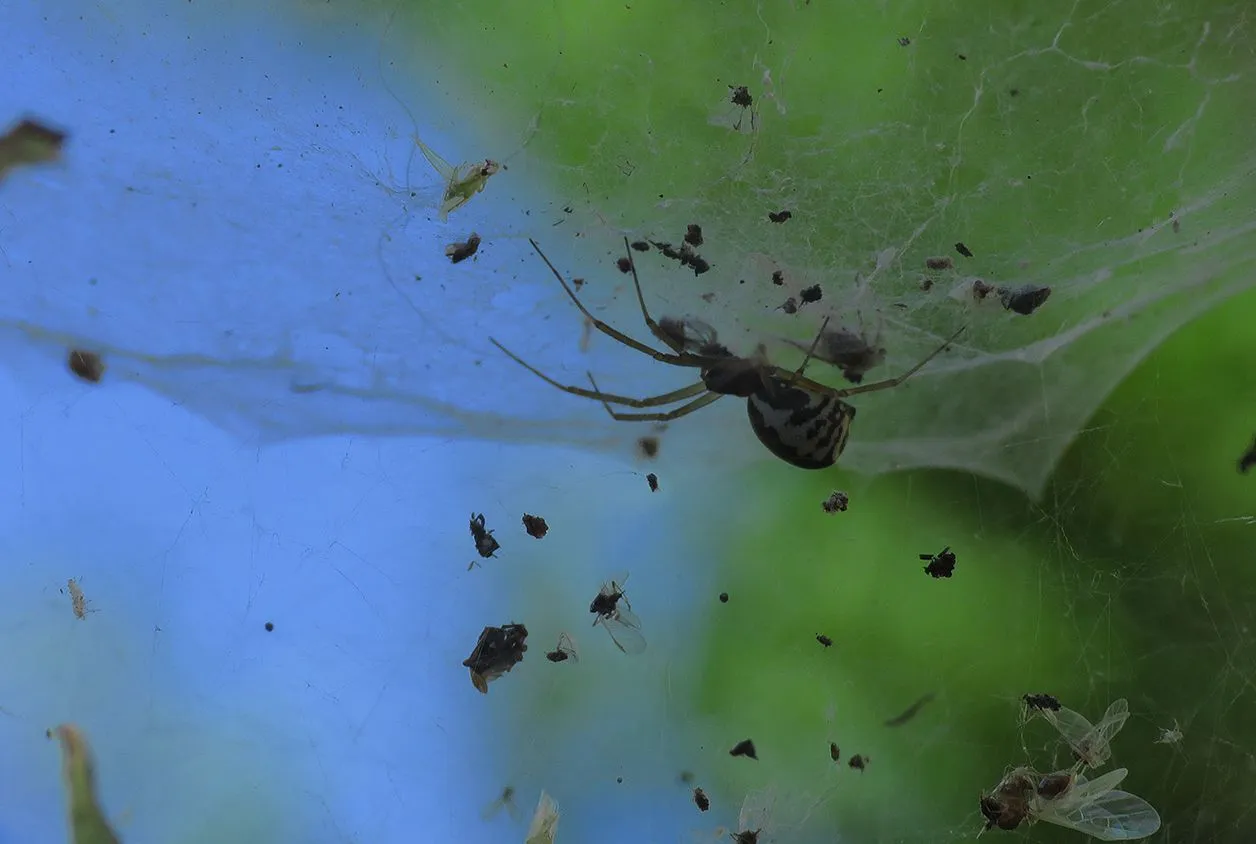
Later that day, in the afternoon, I found another Frontinellina frutetorum spider.
This one has built its silky construction near the top of the tomato plant, for a change ...
... so you can finally see the entire web and compare its size to the size of the spider.

In this photograph, you can take an up-close look at some of the threads near the top of the construction.
Here you can see a small seed that ended up caught in the web. This seed belongs to one of the many self-seeding plants that form my lawn.
If you take a minute to explore the details of this photograph, you'll notice the spider's empty exoskeleton in the right corner. In the following photograph ...
... the focus is on the zucchini plant again.
I spent an hour or two almost every day observing the secret life of my garden. Many of those hours were dedicated to the Psyllobora vigintiduopunctata ladybeetles.
You can see a pair mating here.
I was observing this larva on the upper surface of the leaf ...
... when the two adults appeared from the mysterious underside.
If you enlarge this photograph by clicking on it, you'll see the adults and the larva close to each other in the center of the shot.
The male looked more active in this segment of the reproduction while the female was grazing the mildew.
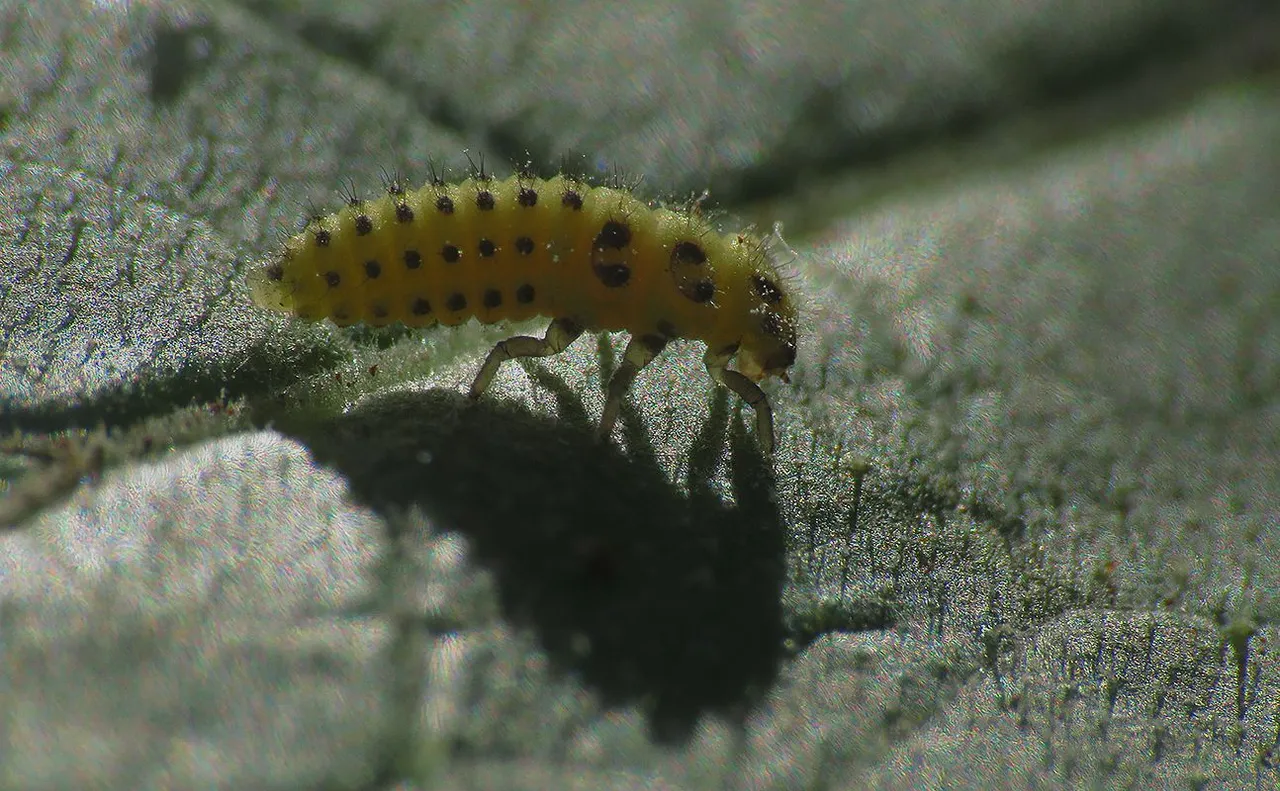
Here you can see another larva. This one was photographed in ambient light.
On one occasion, I came across this mating situation that included three ladybeetles.
Two males and one female, I suppose.
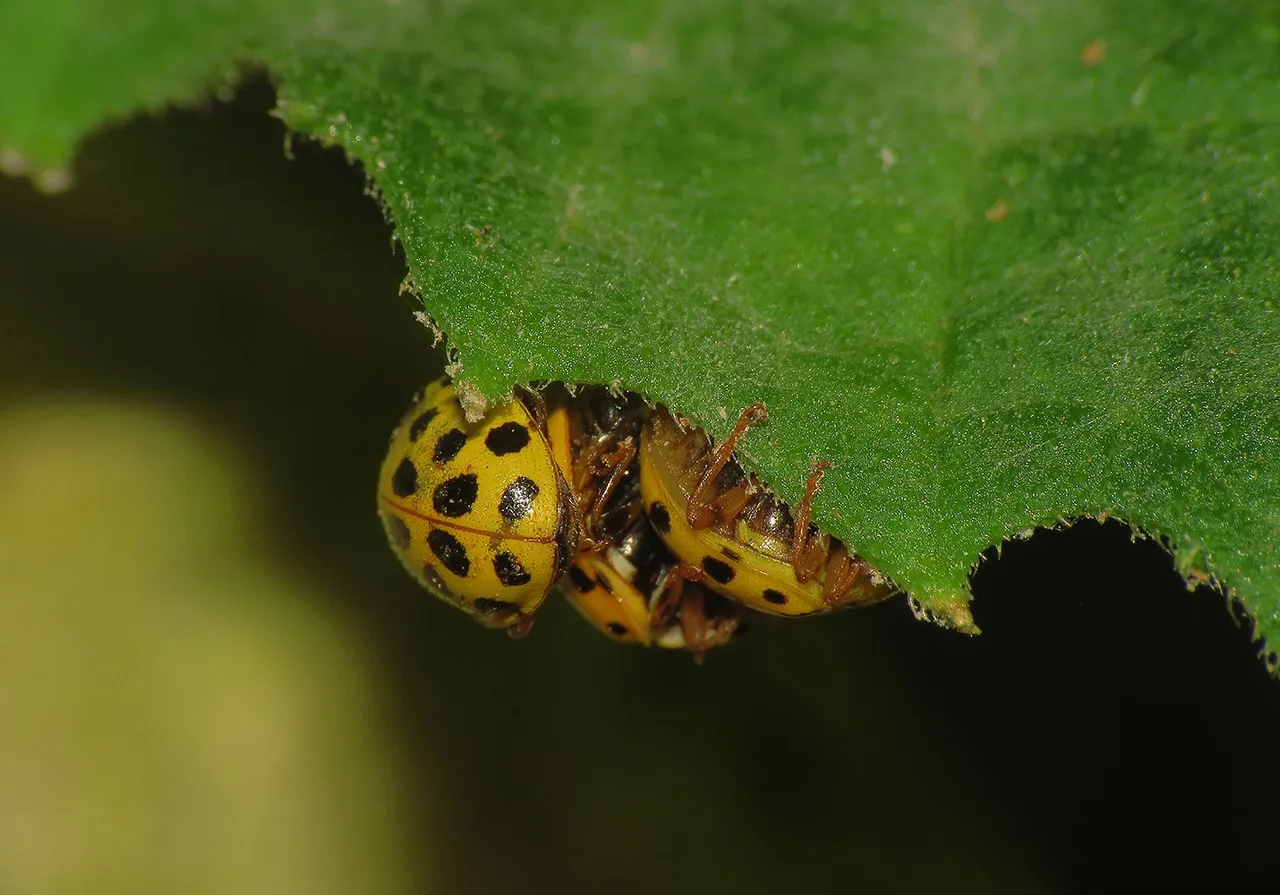
At first, I noticed some action on the lower surface of the leaf.
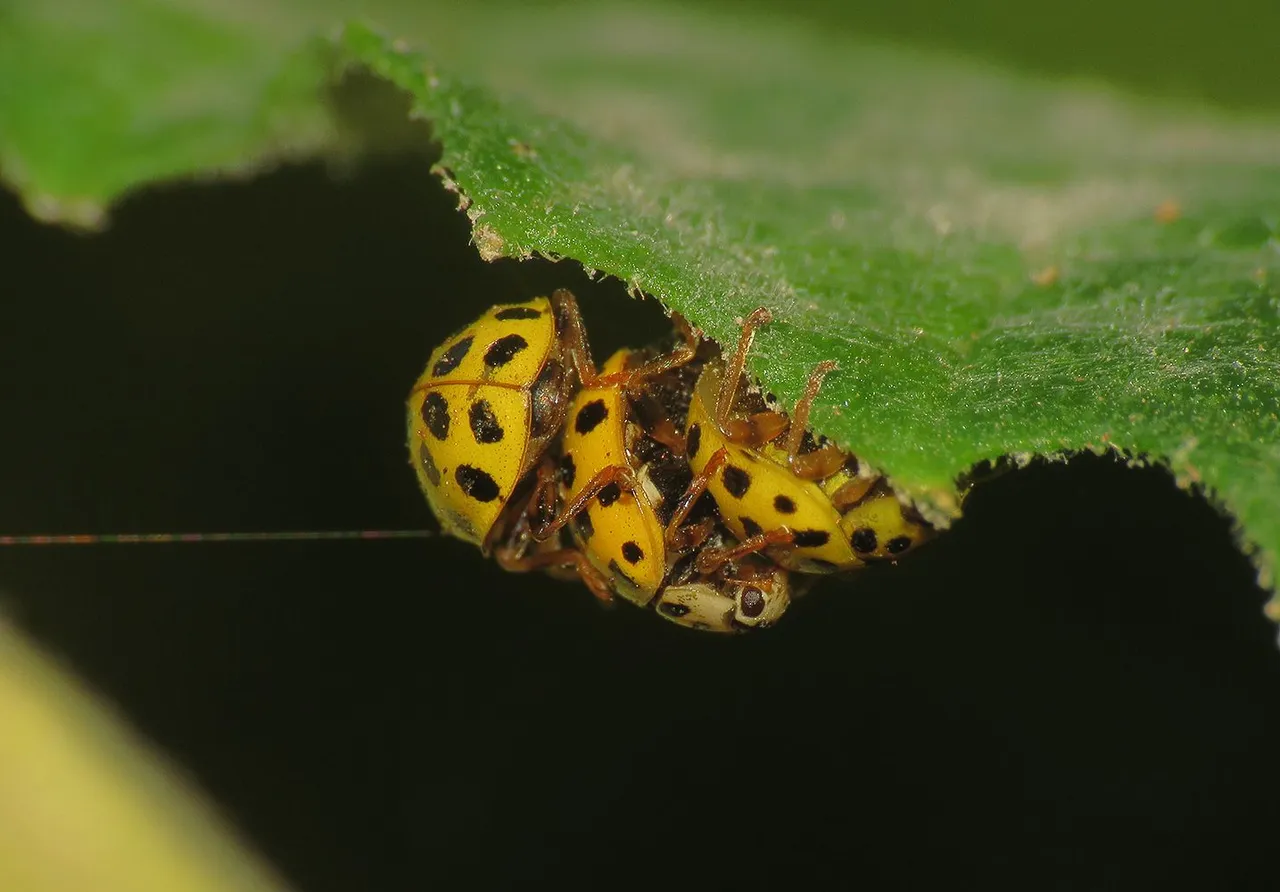
These insects are much smaller than the typical, the most iconic Coccinella septempunctata ladybeetle, you know - the red one with black dots. I recognized the species with the naked eye but I wasn't sure about what was going on.
Only through the macro lens, I was able to see all the details and understand the fairly unusual scene.
I mean, I don't know how unusual (if at all!) this kind of situation is. I never noticed it before, so it definitely looked surprising to me.
I took plenty of photographs before turning my attention to something else.
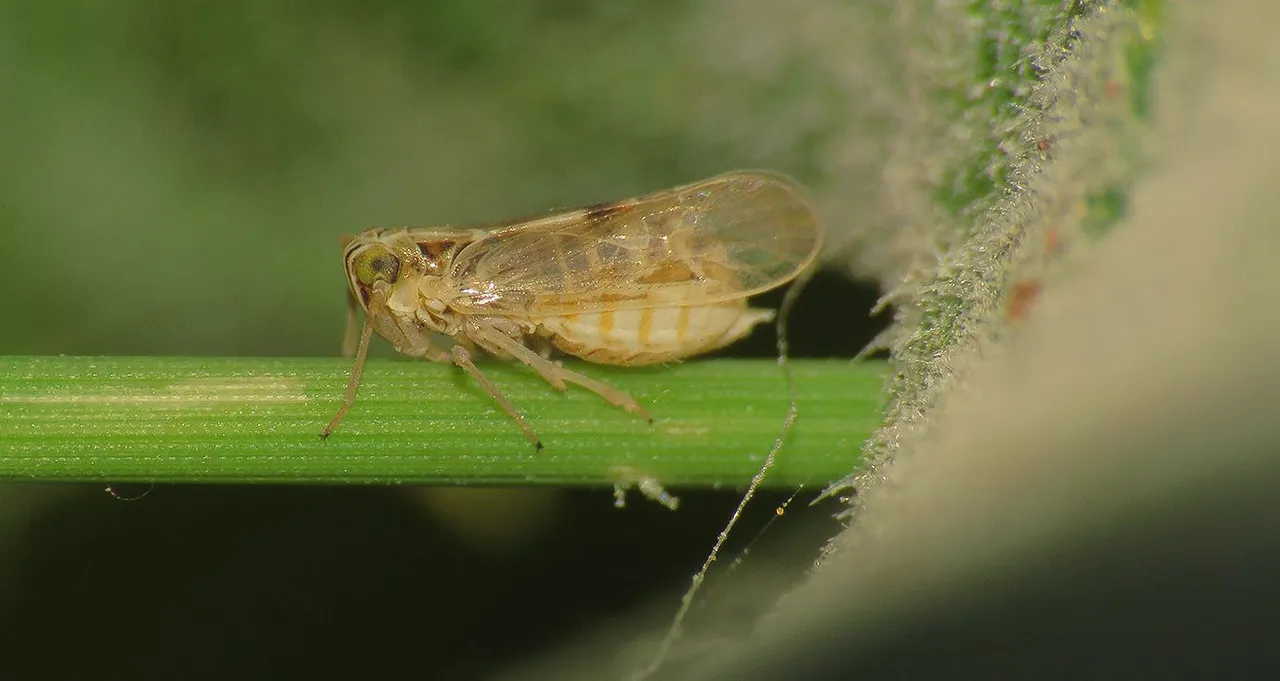
Here you can see a planthopper from the Delphacidae family. Can't tell you the name of the species.
Psyllobora vigintiduopunctata is a rather small ladybeetle. Much smaller than a person who only has the typical ladybeetle in mind would expect a ladybeetle to be. But the one shown in this and the following five photographs is even smaller. Considerably smaller.
The name of the species is Scymnus rubromaculatus. The ladybeetle was roaming the upper surface of the large zucchini leaf but wasn't there for the mildew.
This is a predatory species. Adults and larvae feed on mites, scale insects, and aphids. In the following photograph ...
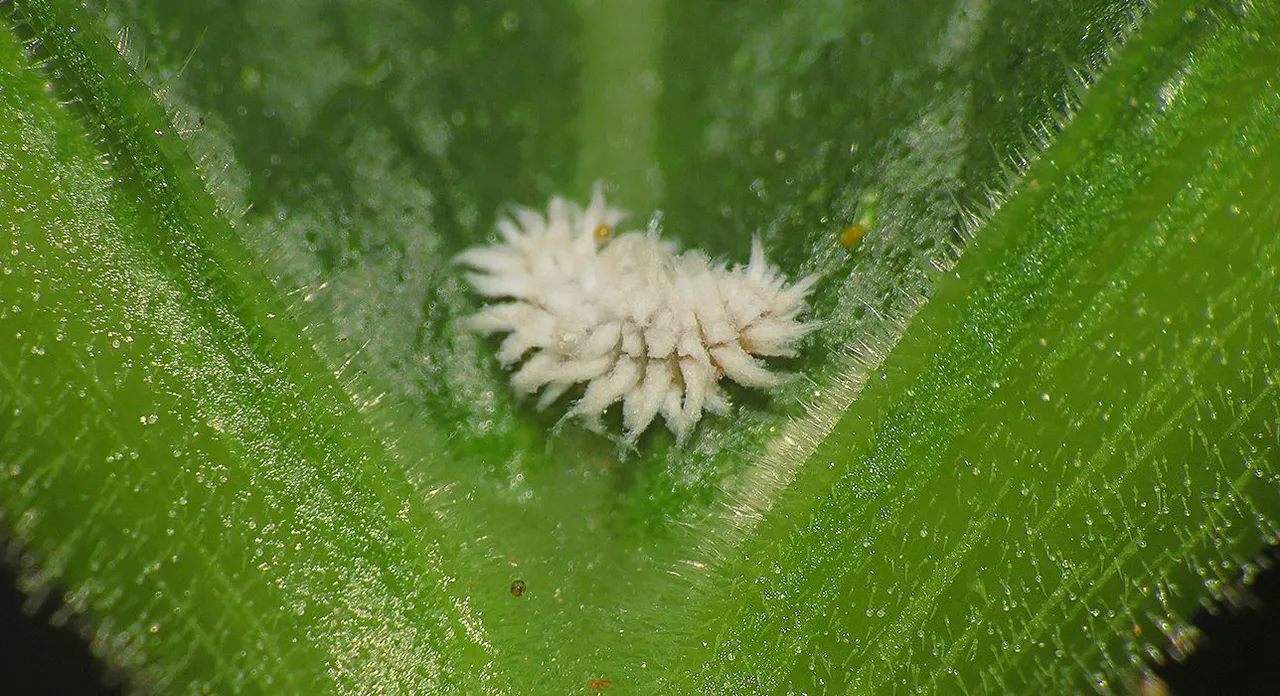
... you can see the larva.
It looks like a tiny fragment of moving white fluff because the body is hidden under the waxy filaments that serve as protection against some predators. The wax isn't smelly or toxic, or anything like that but it makes the meal less juicy and digestable.
This photograph reveals some anatomic details usually hidden by the waxy filaments.
AND THAT'S IT FOR TODAY. HOPE YOU ENJOYED THE JOURNEY. AS ALWAYS HERE ON HIVE, THE PHOTOGRAPHS ARE MY WORK
The following links will take you to the sites with more information about some of the protagonists of this post. I found some stuff about them there.
https://en.wikipedia.org/wiki/Nezara_viridula
https://en.wikipedia.org/wiki/Psyllobora_vigintiduopunctata
https://en.wikipedia.org/wiki/Brown_marmorated_stink_bug
https://en.wikipedia.org/wiki/Empoasca_decipiens
https://en.wikipedia.org/wiki/Frontinellina
https://en.wikipedia.org/wiki/Delphacidae
https://www.gbif.org/species/5749490


